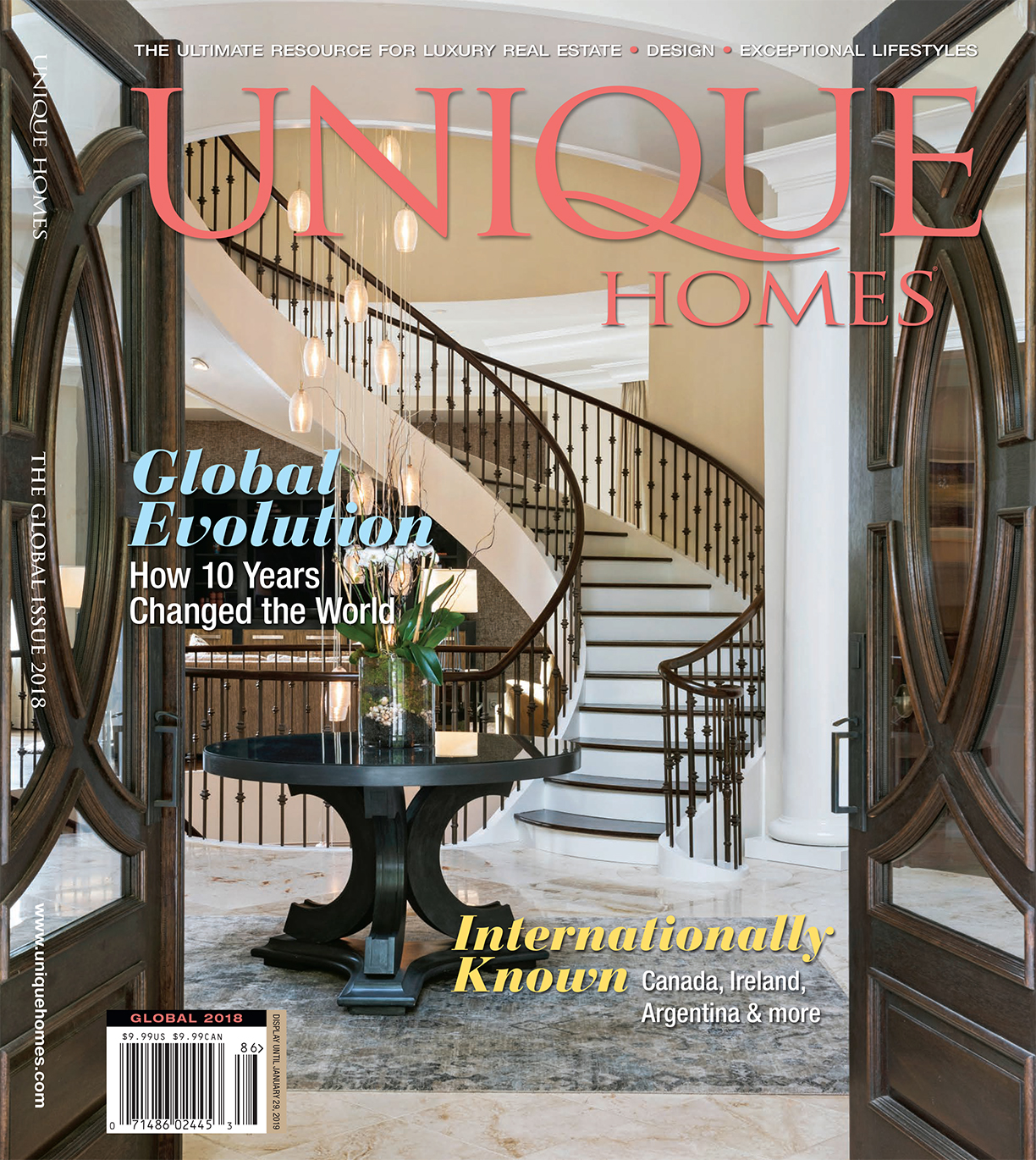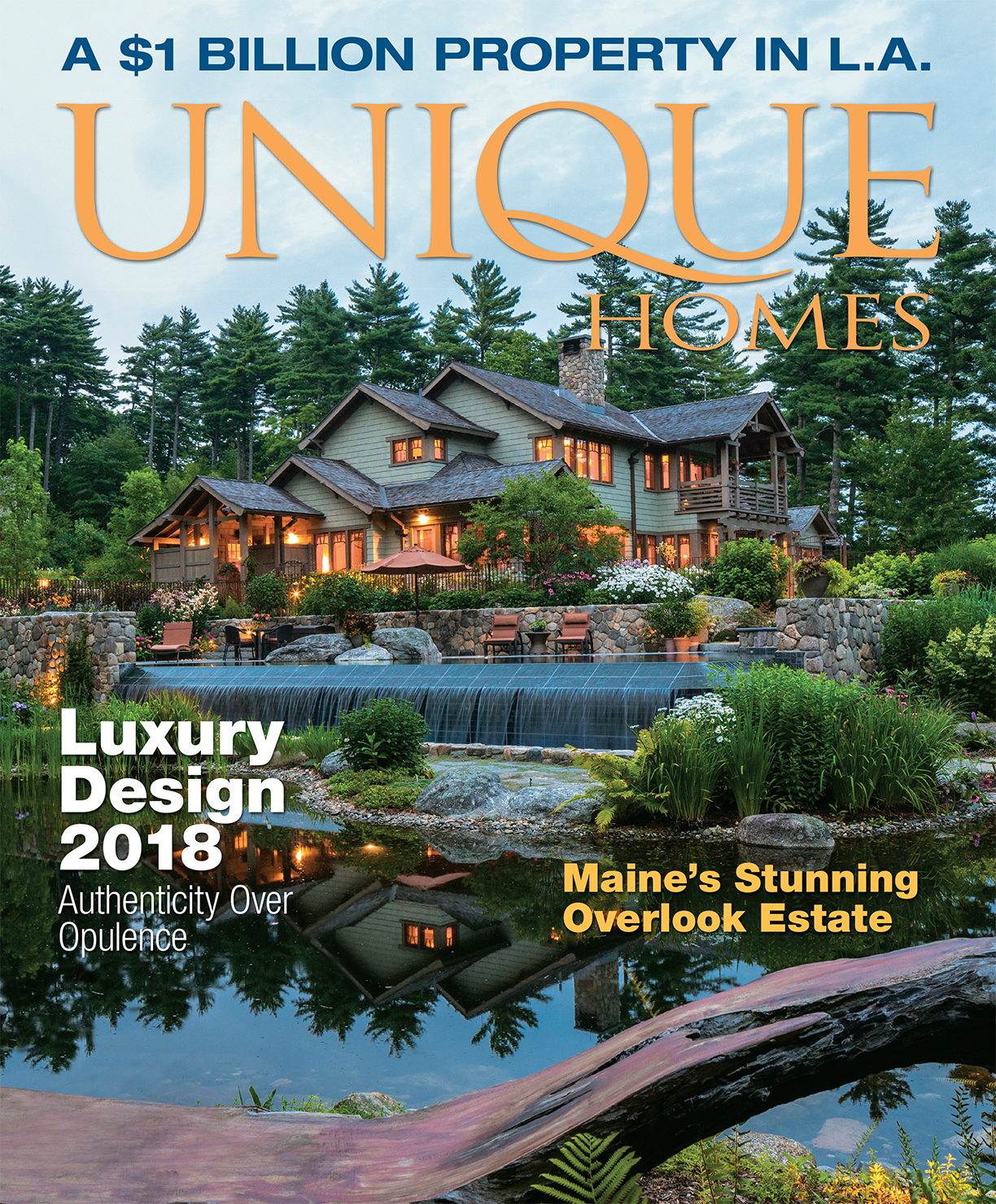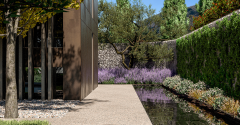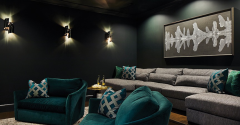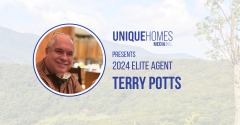ACTRESS, AUTHOR AND ENTREPRENEUR SUZANNE SOMERS AND HER HUSBAND ALAN HAMEL HAVE LISTED THEIR ONE-OF-A-KIND, 72-ACRE HILLSIDE RETREAT IN PALM SPRINGS, CALIFORNIA.
The couple, who have owned this expansive mountainside compound since the late 1970s, are listing it at $9.5 million and have selected Ron Parks of Pacific Sotheby’s International Realty and Scott Lyle of Douglas Elliman Real Estate to co-list the one-of-a-kind property.
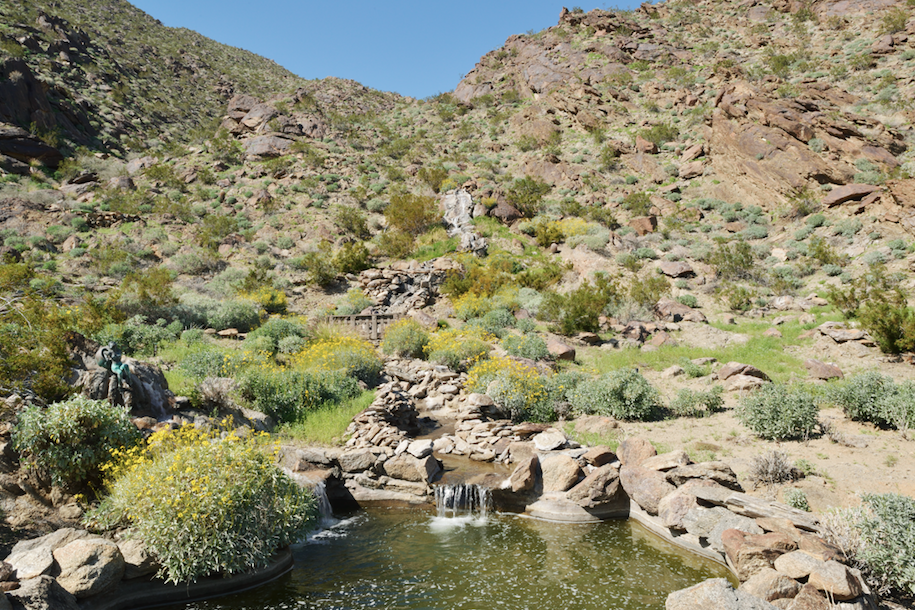
“Alan and I have finally decided to let go of our compound,” says Somers. “It’s been our private paradise; our L.A. getaway for so many years; our kids grew up here. We love entertaining on the grounds; our friends fly in from all over for a surprising south of France experience in Palm Springs. We’re changing things up a bit now and have purchased a Steve Chase-designed mid-century modern home on the other side of town. We don’t need 70-plus acres anymore; time for a new journey.”
Scattered across the main courtyard area are five buildings with 7,200 square feet of private living space, including five fully appointed bedroom suites (one of which is The Rock House by iconic architect Albert Frey), a pool house, a two-bedroom caretaker quarters, and an outdoor amphitheater carved into the mountain that seats 50 and has a dance floor that doubles as a yoga and meditation area, and offers a pool, spa, hiking trails and natural waterfall that spills down the hillside.
The compound is reachable by a private funicular, on foot or by golf cart via a private road. In the late ’70s, Somers and Hamel moved to the property as a weekend retreat; it was a safe haven, very private and an escape from their public life in L.A. Eventually, it became their permanent residence.
There have only been three owners in 100 years including the Hamels. “That says it all about this unique mountainside compound,” adds Somers.
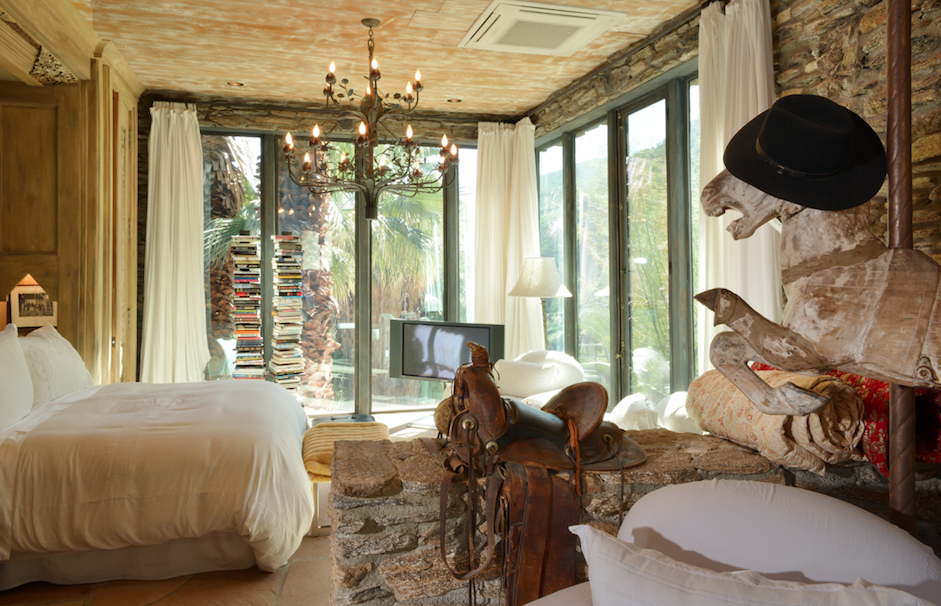
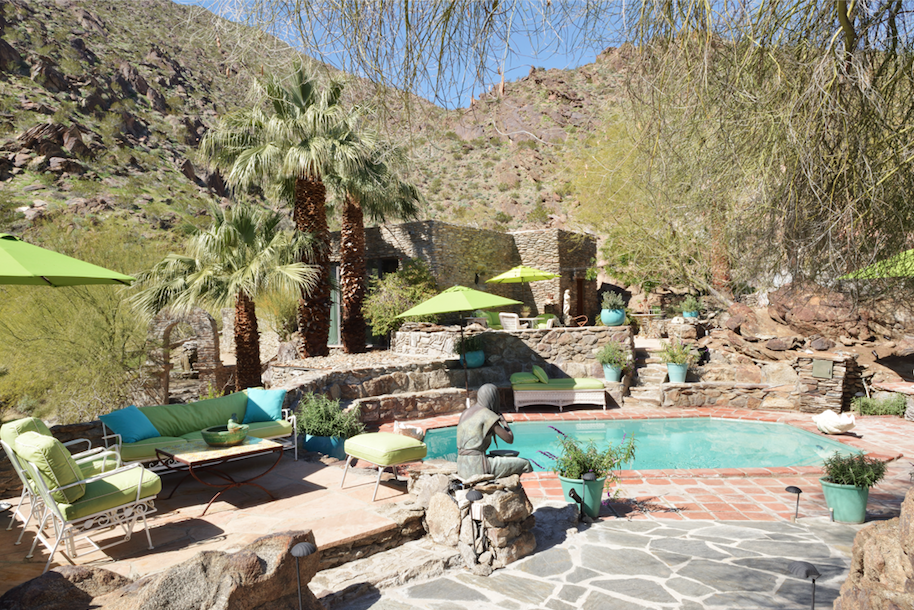
Photos courtesy of Pacific Sotheby’s International Realty.
This fantastic Mediterranean villa showcases stunning views of the Catalan coastal sea in exclusive of Punta Brava, in Sant Feliu de Guixols, Spain in one of the most beautiful places of the Costa Brava. The property offers total privacy and a very impressive panoramic views of the coast.
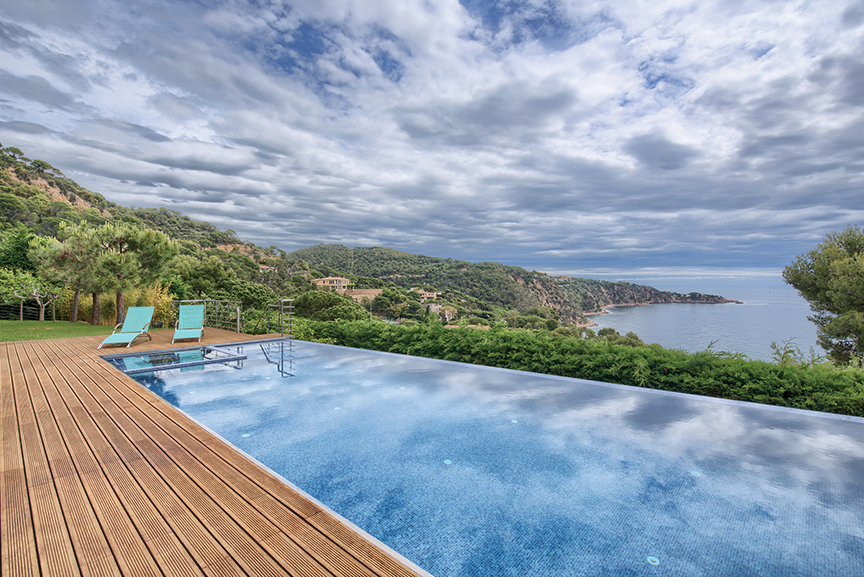
Enter the home by the garage, which has an elevator to the solarium terrace with a bar and spectacular views. Going down, the third floor features a suite, a suite with a dressing room plus distributor room, a master suite with office, full bathroom and large dressing room with access to the garden. All suites showcase terrace and sea views.
Descending to the second floor, there are two suites, one with access to garden, living room with fireplace, and kitchen — all with access to the outside and spectacular views. Traveling to the first floor, it includes a cellar, electrical equipment room, gym, sauna, Turkish bath, and a cinema room with access to the private pool with a wooden platform. Additionally, there is an apartment for service with kitchen, living room, one double bedroom and one bathroom with shower. The garage can hold up to four cars.
The house, listed for 7.5 million euros by Coldwell Banker Prestige Begur, was built in 2012 with a modern design and high quality materials. It has a constructed area of 1,110 square meters on a 1,933-square-meter plot.
FOR YEARS, NEW TECH COMPANIES HAVE BEEN THOUGHT OF AS THE ‘DISRUPTERS’ IN THE REAL ESTATE INDUSTRY. BUT SAVVY REALTORS ARE POSITIONING THEMSELVES AS THE AGENTS OF CHANGE.
The current market shift from buyers to sellers generates the most attention, but the number of sales and pace of price appreciation are only one swell in the wave of transformation rolling through the real estate industry. Technology is typically hailed as the disrupter, but changing demographics, new lifestyle aspirations and evolving buyer preferences are all at play in today’s real estate landscape.
“If you ask anyone that has been in the business more than 10 years, they say ‘here we go again.’ More paperwork, more platforms, more new companies, more new agents. Yet, ultimately real estate is the same. Our clients require handholding, advice, and moral support, deals get negotiated, and transactions finalize or fall apart. Yes, there are slight shifts in the marketplace, but generally, it still functions the same,” shares Lucio Bernal, a broker associate with Coldwell Banker Residential Brokerage in Palm Springs, who is also an expert trainer with the Institute for Luxury Home Marketing.
What is changing is almost every other aspect of real estate from tools to facilitate broker client relationships to virtual reality apps enabling buyers to envision making a prospective property their own. Increasingly agents are looking to their brokerages to keep pace with technology. “They are leaning on their brokerages, more than ever, to help arm them with tools, from digital marketing to smart, proactive customer relationship management systems (CRMs) that will keep them cutting edge, as well as those they can’t afford to leverage on their own,” says Stephanie Anton, president of Luxury Portfolio International. Additionally, affiliate groups like Luxury Portfolio and major brands have amped up marketing capabilities so agents can easily create a cohesive campaign.
There might be a technology revolution taking place in real estate, but market shifts are reinforcing the importance of the agent. “Technology has always been the present. It’s how you use it that benefits you the most,” shares Bernal. “The perfect example is: If you are dealing with a consumer, they are more likely to use you based on reputation and recognition than whether you know a certain app or technology platform. Technology should be used as a resource and compliment your ability to get face-to-face and maintain contact with a consumer.”
At this time last year, blockchain and the impact of virtual reality and artificial intelligence on real estate were being debated. Today, the chatter is about portals morphing from search engines to places to buy and sell homes, a new classification the industry characterizes as iBuyers. Opendoor, founded in 2013, started the trend, followed by others including Offerpad and Knock. Zillow and Redfin have also introduced iBuying in some markets. iBuyers purchase consumer’s homes outright using analytics that enable them to come up with a price based on the home’s perceived value, usually within days. Unlike homes sought by flippers, these are not troubled properties and offers reportedly are close to the value estimation. Other portals are beefing up offerings for consumers, adding mortgage and title services. Startups such as Purple Bricks offer a new twist on the flat-fee concept.
Investor dollars from venture capital and hedge funds are flowing into real estate, fueling many new ventures, which is another change potentially revamping the industry. “Everyone is investing in technology to disrupt or change real estate,” says Mark Choey, co-founder of Climb Real Estate, a San Francisco brokerage, which was acquired by Realogy’s subsidiary NRT in 2016. The real estate industry is rapidly shifting, and innovation is not just welcome, it’s desperately needed,” said founder Chris Lim, whose background is in marketing. Choey hails from the tech sector. Climb was the first brokerage to work with Matterport and continues to incubate emerging apps and work with new vendors.
ENABLING THE AGENT
Among traditional brokers, Keller Williams and RE/MAX are often noted for new tech initiatives, but almost every brand and national affiliate group is boosting technology offerings and platforms, often through relationships with providers and new tech venders including virtual staging, enhanced CRM and 3D tours and imaging. Technology ultimately benefits consumers, but traditional brands and affiliates say their focus is enabling their agents to do a better job.
“Everything has shifted in many different areas from the brokerage level, the buyer level, who the buyers are, what they are looking for,” says Sally Forster Jones, executive director, Luxury Estates, Compass. “I think there is a shift in the way that brokers are functioning. They are more innovative with more technology and more marketing as opposed to the older traditional real estate firms.
“Consumers care about responsiveness. They care about the fact that if they reach out to an agent, whether it be on their website or mobile app the agents gets back to them instantly, and technology can help with that,” says Marilyn Wilson, founding partner of real estate consultants WAV Group and also a founder of RETechnology.com.
“Technology has always been the present. It’s how you use it that benefits you the most. The perfect example is: If you are dealing with a consumer, they are more likely to use you based on reputation and recognition than whether you know a certain app or technology platform. Technology should be used as a resource and compliment your ability to get face-to-face and maintain contact with a consumer.”
Tapped by Google to create a virtual staging app using augmented reality, Sotheby’s added Curate to agent toolboxes last year. Not only can a homeowner visualize a home before buying, but a partnership with a home furnishings company allows potential buyers to virtually furnish the home as well.
“A depth of understanding of what a property has is really important to consumers. The other thing that consumers are responding to online are floorplans,” says Wilson.

GETTING REAL WITH VIRTUAL
In the last year, GeoVC, a tech start-up offering 3D immersive tours and floorplans that can be created using next generation smartphones, integrated virtual staging, exterior 3D scans, and aerial 360-degree panoramas captured with a drone with interior 3D tours. “Outdoor imagery is captured using a regular drone, automatically processed into a 3D model, and integrated together with interior virtual tour. Such an exclusive experience will differentiate luxury properties with beautiful facades and roofs, and spacious lots,” shares Anton Yakubenko, co-founder and CEO of GeoCV.
“Luxury has really turned into personalization now,” comments Thompson. Tools like Curate, RoOomy and virtual staging apps enhance opportunities for personalization. Thompson explains: “Someone can walk into a home and say, ‘not my style,’ but it doesn’t matter because I have the tools that allow me to make it feel like what I want it to be.”
Even Compass, which touts itself as “The first modern real estate platform, paring the
industry’s top talent with technology,” says technology is there to benefit the agent. “Compass is building for the agent. Every program, tool, and service is (created) with the agent in mind. Many of the other real estate technology companies out there are working to improve the consumer experience and not focusing on the agent. We believe that by empowering the agent, consumer experience will be improved,” says Sarah Vallarino, head of West Region Communications at Compass.
“Talking to agents, the message we consistently heard was ‘give us technology,’” says Thompson. “They didn’t necessarily know what that technology was just that they needed it. They understood that the industry was changing, and consumer behavior was changing. They know because they’re the boots on the ground and so they can feel the shift in consumer behavior.”
As markets shift, agents are retooling, once again looking at how they do business and what skills and knowledge will be required. “It’s always either somewhat of a buyer’s market. It’s somewhat of a seller’s market. You just have to have your tools in your tool shed and the mindset to be nimble enough to adjust as you read the tealeaves, ” is Wilson’s suggestion.
“Luxury has really turned into personalization now,” comments Thompson. Tools like Curate, Ro0my and virtual staging apps enhance opportunities for personalization. Thompson explains: “Someone can walk into a home and say ‘not my style,’ but it doesn’t matter to me because I have the tools that allow me to make it feel like what I want it to be.”

AGENT PIVOTS
“Many long-time successful agents are being the clever, resourceful entrepreneurs that they are and changing with the market as the market shifts,” says Anton. “Agents today talk about how much of their time and value derives from being an educator for their clients. They partner with their clients to keep them armed with as much information, insights and insider activity as they can, so when it comes time, for example, for an agent to recommend a price reduction, the client is completely aware of the statistics, days on market, what is moving and what isn’t. Nobody wants to have an overpriced home that is sitting and not selling even in a hot market.”
“Today, clients will attempt to collect their information on their own, perhaps from incorrect sources, so agents report pivoting, now more than ever, to spend a lot of their time educating their clients,” she says.
Regarding slowing sales or price appreciation, Anton says: “I highly recommend agents tell the truth, focus on educating their following/clients, and in the process, let their own voice be heard and be themselves. If the market is cooling, share the stats and manage expectations. It’s not the time to be overly positive and cheery as you will come off inauthentic and salesy. Focus on the facts, insights and provide professional guidance.”
“Agents have to stay on top of what is available to them and the consumer. It is imperative to be able to explain the data, to have polished negotiation skills, and to know when to assist the consumer in processing that information,” says Bernal.
“Agents should take full advantage of all the resources that the brands they work with provide. The majority of agents won’t, and that has never changed. Those that want an edge in the industry recognize that there is value in resources and take advantage of some of them. For most agents, resources are overwhelming, and therefore don’t take the time to learn and use them,” says Bernal.
Thompson recalls, “We had to dig in and find out what exactly is it that they (agents) need that will make a difference for them in their day-to-day because they think, you know, there are lots of real estate brands that tout themselves as technology companies, but they really don’t have anything really different.”
“Everything has shifted in many different areas from the brokerage level, the buyer level, who the buyers are, what they are looking for. I think there is a shift in the way that brokers are functioning. They are more innovative with more technology and more marketing as opposed to the older traditional real estate firms.”

EYE ON THE FUTURE
Mark Choey from Climb says, “I think you’re going to see a lot of change in the next year or two,” most likely from many directions. Choey is head of Climb’s Innovation Lab. Having an innovation lab, particularly for a small company, is in itself an innovation. “You’re going to have some business models that are going to evolve, like Opendoor and Knock, that are really going to change the way people buy and sell homes, but it’s not gonna change everything, right. You’re going to have Redfin, Zillow and others come out with tools and things that are going to attempt to either reduce the commission or to simplify to transaction. On the other hand,” he says, “you’re going to see traditional real estate firms arming themselves with technology.”
And while some tout themselves as technology companies, Thompson doesn’t see traditional and technology as being mutually exclusive terms. “You don’t have to be one or the other. People think of Sotheby’s as a heritage brand because we’re been around for close to 300 years now. But a heritage brand can also be tech savvy. It doesn’t have to be one or the other.”
Looking ahead, Bernal says, “The real estate industry has to take both a broad look and a hyper-local look at where the marketplace is based on data and individual perspectives. We say that real estate is local, yet there are many determining factors that create a web of interconnected behaviors throughout the world of real estate.”
Consider Los Angeles, Manhattan and Miami, where the impact of fewer international buyers extends beyond sales and prices. Post-recession, international buyers became a market force determining what was being developed, locations and price points. On the West Coast, view properties and contemporary architecture were particularly favored by Asian buyers, and new builds were often geared to these buyers. Now many L.A. buyers, particularly in higher price points, are local or hail from the U.S. and have different expectations of luxury with walkable locations and neighborhoods taking precedence over views. “That’s a shift and it will continue to be a shift because we have a lot of properties coming on the market geared toward that international buyer,” says Jones.
The desire for the ability to walk to shops and restaurants is happening across all price points, according to Jones, and these new preferences are not limited to L.A. Walkability has been associated with urban settings, but increasingly this characteristic is being applied to suburbs, towns and master-planned communities.
Traffic and gridlock also add to new preferences for locations. In the not too distant future, traffic itself may be seen as even more of a disruptor than it is now, changing where people live and property types.
Photo of Lucio Bernal by Cherie Johnson for Moncherie Fotography. Photo of Sally Forster Jones by Lauren Hurt. Photo of Kevin Thompson courtesy of Sotheby’s International Realty.
In the 10 years since the recession, residential real estate, especially in the realm of higher-priced properties, has morphed into a worldwide enterprise.
“There is no question; people have more of a global mindset. They are looking for real estate in places they love,” says Stephanie Anton, president, Luxury Portfolio International, which several years ago adopted the tagline, “We’re global. We’re local.” The phrase aptly characterizes the status of luxury today.
“The saying goes that all real estate is local, but that does not mean that all buyers are,” said NAR President Elizabeth Mendenhall, CEO of RE/MAX Boone Realty in Columbia, Missouri.
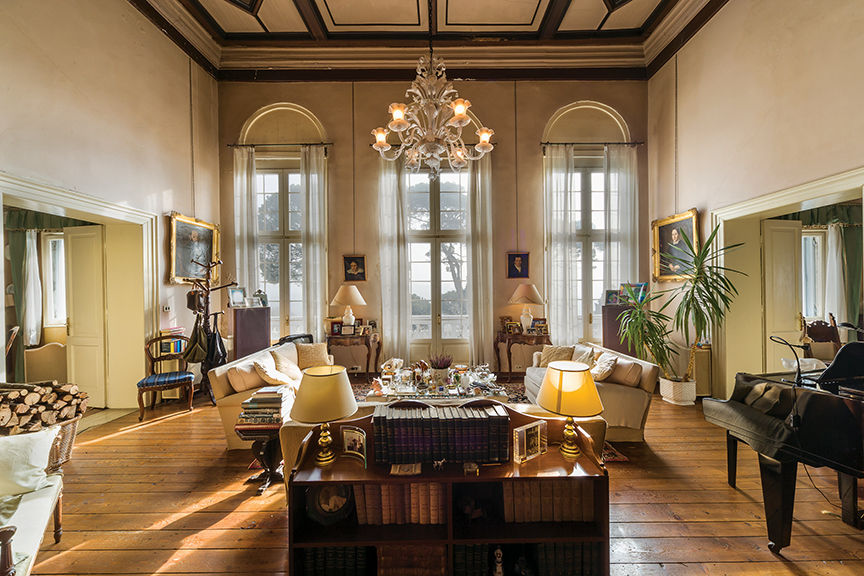
Congeliano, Italy
Photo courtesy of Atlante Properties Luxury Portfolio International®
For the industry, the ramifications of globalization extend beyond merely who buys what, where. “Historically, real estate market dynamics were considered a local phenomenon. In the luxury sector, this is no longer the case, as the value drivers for prime property in one corner of the globe increasingly originate from a completely different region of the world,” explained Christie’s International Real Estate in its 2018 report Luxury Defined, noting this trend is most evident in secondary markets — second home and resort lifestyle destinations. In 2017, sales of resort and vacation homes grew by 19 percent compared to 7 percent in 2016.
Buying property outside of one’s home country is nothing new, but, until the 1980s, sales across borders were generally limited to resort enclaves or a pied à terre in Paris, London or New York, along with the occasional trophy property.
Today, rather than a specific location, high-end buyers are likely to search for a particular property type. “Buyers these days are looking in multiple markets. They’re not as geographically contained. So, if they’re looking for a ski chalet, they could be looking at a number of different countries and throughout the Rocky Mountains in the United States,” shares Laura Brady, president and founder of Concierge Auctions, who says her company initially saw indications of this trend with ranch properties, which are very unique. “Clients don’t care specifically which market they’re in; instead, they want the right property.” Founded 10 years ago, Concierge Auctions has a team in Europe and activity in 18 countries.
Perhaps it’s geography, but Americans typically first look within their own borders. On the other hand, Bob Hurwitz, founder and CEO of the Hurwitz James Company, says, “Wealthy foreign buyers are far more likely to be open minded about locations outside their country as their first choice, in my experience. It’s not difficult to understand if you travel a great deal. In many of the countries I visit on business, you will not find many Americans, but you will meet a wide variety of citizens of other countries.”
More than property and search preferences drive the shift toward a global perspective. “There are several factors contributing to the increased globalization of luxury real estate,” shares Anthony Hitt, president and CEO, Engel & Völkers Americas, who cites the rise of digital, social and mobile technologies. “Real estate is not immune to the changing patterns of consumption enabled by technology; clients have more visibility, and therefore interest, into international homes and listings.”
Experts also point to an increasingly global economy, changing work/life balance and how commonplace travel, for both work and pleasure, has become. Craig Hogan, vice president of luxury, Coldwell Banker Real Estate, plans to exchange his primary residence in Chicago for two small condos, one on Michigan Avenue and another in Puerto Vallarta. “Fifteen years ago, my partner and I never would have considered that. Today, we are mobile. Our careers take us all over the world.”
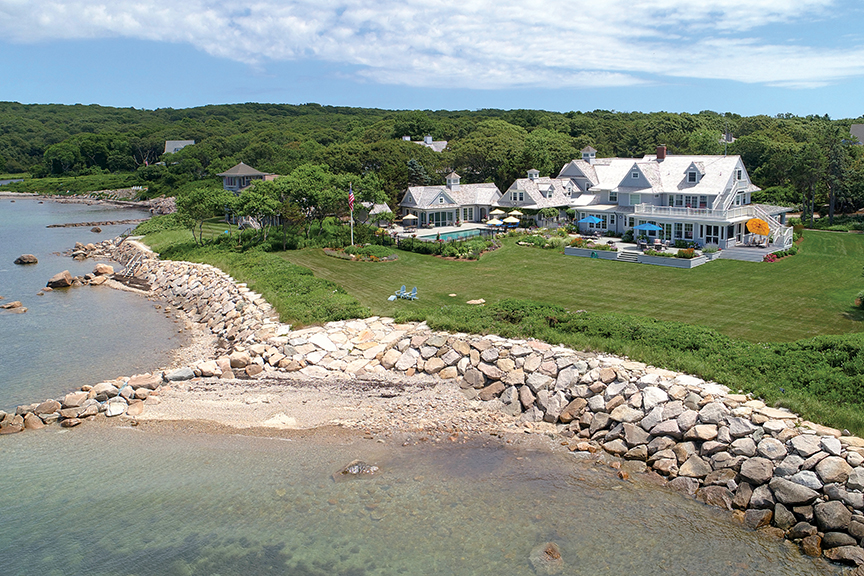
Falmouth, Massachussetts
Photo courtesy of Robert Paul Properties/Luxury Portfolio International®
“With the world that we live in now, it’s less important that you live where your business is or where you do business. So, you’ve got a lot of people just making lifestyle choices. They’re just picking the city that they enjoy the most, and they’re moving there,” shares Mike Leipart, managing partner of The Agency Development Group in Beverly Hills.
Post-Recession Roots
The foundation for today’s international dynamic lies in the early post-recession years. In 2007 and 2008, prices on average fell by approximately 17 percent across the globe. By 2009, 73 percent of the prime property locations surveyed by Knight Frank had experienced declines, and savvy buyers scoured high-end markets worldwide for bargains. At the same time, a growing uptick in wealth and wealth creation brought more buyers to the international market.
Wealth creation continues at the post recession pace, with the number of millionaires worldwide tallying at 22.3 million, according to Wealth X. Those with a net worth between $1 million and $5 million hold 40 percent of the global millionaire wealth, while the remainder is held by the ultra wealthy, those with a net worth in excess of $30 million (Knight Frank pegs the benchmark for ultra wealth at $50 million). From 2012 to 2017, Knight Frank says the number of ultra-high-net-worth (UHNW) individuals increased by 18 percent, followed by another 10 percent gain in 2017.
Coldwell Banker Global Luxury estimates 32 million millionaires reside in the U.S. The U.S. remained the dominant nation for wealth in 2017, both among millionaires and the ultra-wealthy, according to Wealth X, although growth of this population and net worth in the U.S. was the lowest among the seven top-ranked countries. Japan was second with an 11-percent rise in the UHNW population, followed by China, Germany, the U.K. and Hong Kong.
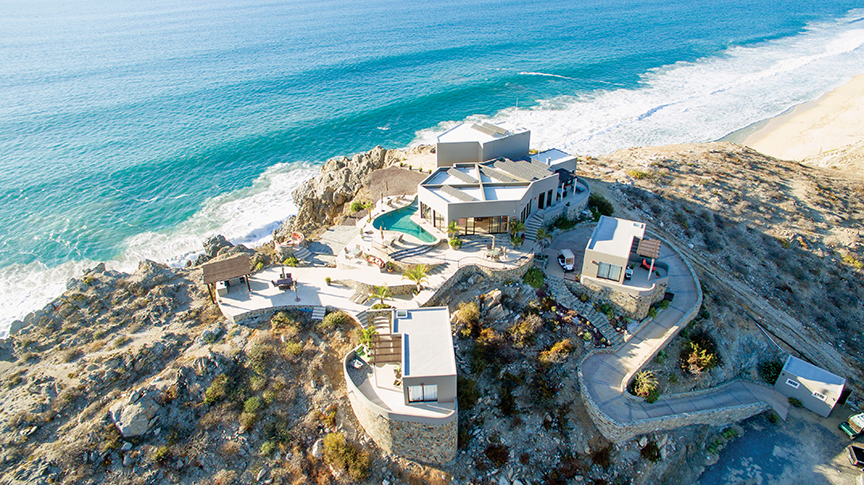
Mexico
Photo courtesy of REMexico Real Estate/Luxury Portfolio International®
Globally, wealth in 2017 increased in all regions, with both Latin America and Europe showing a resurgence over 2016. “The confidence of foreign buyers is back,” says David Scheffler, president, Engel & Völkers France. “The Parisian luxury market has always attracted wealthy Middle Eastern buyers and continues to do so. Qatari, Kuwaiti, Saudi and Omani clients are looking for outstanding apartments and townhouses, the so called hôtel particulier. The trend to buy luxury properties in Paris is not just reserved for the ultra-wealthy, but applies instead to a wider range of affluent buyers. Some might look for a small 50- or 60-square-meter pied-à-terre, while others look for ‘representative’ apartments in the Haussmann style, up to 12 million euro.”
Over the course of the last 8 to 10 years, cross-boarder buying surged, ramped back, and picked up again. In 2016, global sales of luxury properties retrenched, partially in response to Brexit, government restrictions on wealth and the transfer of money. Markets bounced back in 2017, with sales of $1 million-plus properties up substantially.
Christie’s reports an 11-percent increase in sales, the best annual increase since 2014. Luxury properties sold in 190 days, indicating more realistic pricing in some markets and lack of inventory in others. Exceptions included New York and Miami, which saw an influx of new inventory and a shift in buyer interest. In Toronto and Vancouver, newly introduced cooling measures from the government slowed sales.
“I don’t think there is any indication that they [international buyers] are NOT looking in Manhattan. The indication is that they are either interested in the properties at lower numbers or they prefer to wait the market out and hope to buy when things are at a bottom (I have seen this many times before. It never works!). Nobody is moving to Detroit because they can’t find what they want in New York City,” shares Frederick Warburg Peters, CEO of Warburg Realty. “Russians and Europeans are far scarcer than they were in 2010 or 2011.”
Still, both for high-net-worth and ultra-high-net-worth individuals, New York follows Hong Kong as the best city for prime properties.
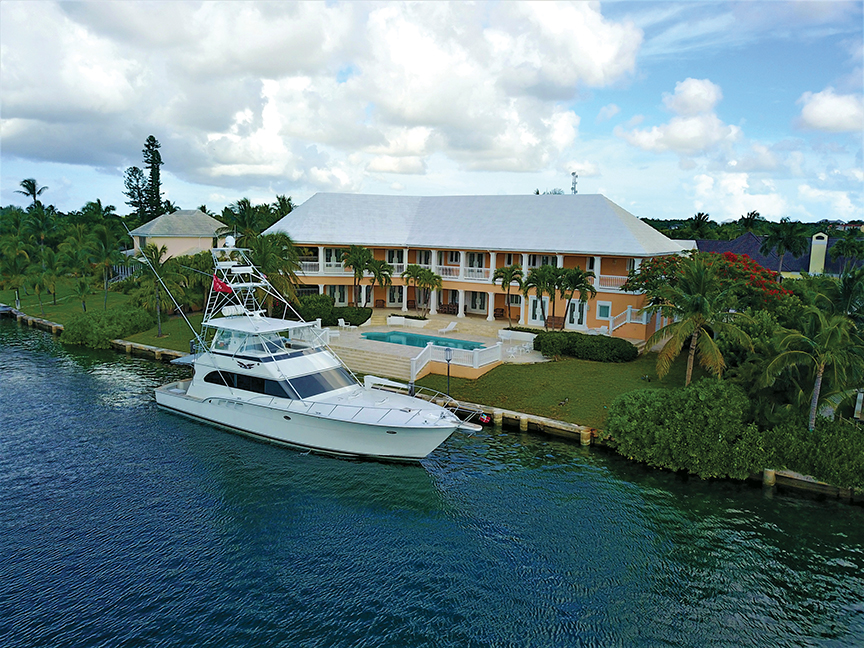
Nassau, Bahamas
Photo courtesy of Bahamas Realty/Luxury Portfolio International®

Toronto, Canada
Photo courtesy of Harvey Kalles/Luxury Portfolio International®
Following the recession, a growing body of research focused on wealth and global cities publish multiple rankings. A city’s position may shift slightly, depending on the research, but all reports include the same top locations for luxury properties. Hong Kong places ahead of New York in Christie’s 2017 index, with New York moving up to second, followed by London, Singapore, San Francisco, Los Angeles, Sydney, Paris, Toronto and Vancouver.
Lower prices pushed Miami just out of the top 10, but the city remains a good example of the change international activity can spark. “The international market has arguably impacted Miami as much or more than any other U.S. market. The influx of capital from Europe, South America, Russia, China and Asia has permanently changed our community. The easiest example is by simply looking at our booming skyline,” says Irving Padron, president and managing broker, Engel & Völkers, Miami.
The highest-priced sale globally was $360 million in Hong Kong, and despite government efforts to curb rising prices, there are no indications of slowing demand for luxury residences here. Also, adding to this market, according to Anton, is continued interest from mainland Chinese buyers.
Numbers Tell the Story
Rather than sales and prices, the best indication of just how global real estate has become can be seen in the expansion of major brands, affiliate groups, and even boutique firms worldwide. “All brands are connected globally,” Hogan observes, adding that even independents need some kind of a global connection. “It’s part of the dynamic,” he says.
Coldwell Banker is in 49 countries. Sotheby’s International Realty network has offices in 72 countries and territories. Luxury Portfolio International and Leading Real Estate Companies of the World lists properties in over 70 countries. Who’s Who in Luxury Real Estate’s network includes 130,000 professionals in over 70 countries. Berkshire Hathaway HomeServices recently opened franchises in Germany and in London. Bob Hurwitz had already positioned his boutique firm as an international player before the recession. Today, he has offices in Los Angeles, San Francisco, New York, London, Shanghai and Singapore.
A global orientation can also be seen in members of the Institute for Luxury Home Marketing. There is “an increased focus and intentional approach as they target international buyers through affiliations with brands, networks and associations,” says general manager Diane Hartley. “In fact,” she says, “we have members in many countries outside of North America who are building relationships and sharing business with our members in the U.S. and Canada.”
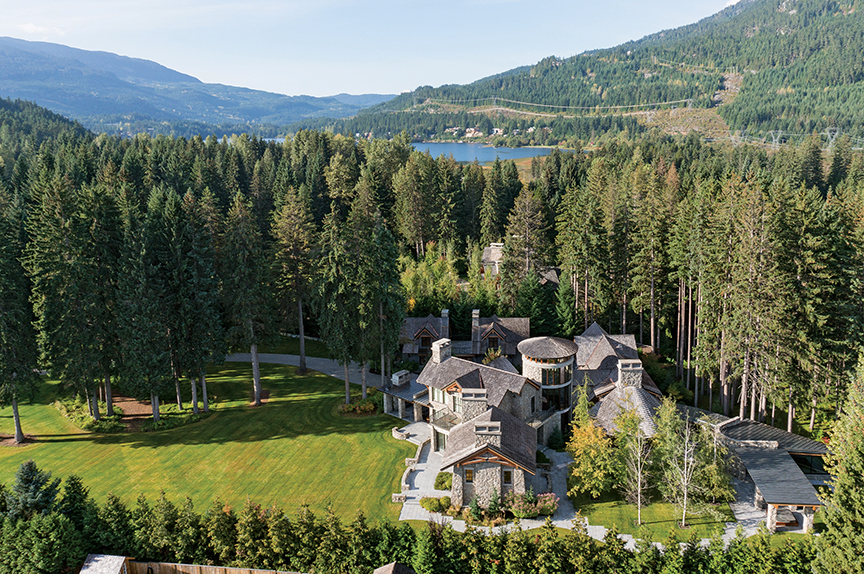
Whistler, Canada
Photo courtesy of The Whistler Real Estate Co./Luxury Portfolio International
Firms based in Europe also continue to increase their footprint. Founded as a boutique firm in Hamburg, Germany, Engel & Völkers is now in 800 locations in Europe, Asia and the Americas, establishing its first offices in the U.S. in 2007. “We have experienced firsthand the globalization of luxury real estate,” says Hitt.
“For luxury and coastal markets, real estate has absolutely become more global,” shares Leipart. Like a growing number of independent firms, The Agency partners with an international real estate advisory company, Savills, which allows them to sell through 700 offices around the world. Still, he adds, “we are focused on international, kind of connecting the dots around the world as opposed to other cities in the U.S.”
In the luxury world, L.A.’s star continues to rise, and the city in recent years has figured into lists for top global markets. According to the National Association of Realtors, Florida, California and Texas remain the top three destinations for purchases from foreign buyers, followed by Arizona and New York. Still, just under half of all residential transactions for foreign buyers took place in other states. Among buyers, China, Canada, India, Mexico and the United Kingdom account for the most purchases.
Also, Hogan points out, international buyers in the U.S. aren’t always in luxury markets. For example, Asians love to buy real estate close to a university. Another group looks for locations with smaller downtowns. Still others want a large home with a big yard near a lake or river, something hard to find in their home country.
As Much As Things Change
Even though foreign buying in the U.S. slowed in 2017 compared to prior years and to overall activity worldwide, international buyers still have their sights on the U.S. “It’s all about consumer confidence. As long as people feel that the U.S. economy is in good shape and it’s going in the right direction, they’ll buy real estate,” says Brian Losh, chairman of Who’s Who in Luxury Real Estate.
Connections to local markets remain essential. “I will say a lot of it still happens in a very traditional way. People are either coming to L.A. a lot, either they have a child in school here, or they love the area and they decide to buy a home, and they do that through a local Realtor, regardless of where they come from,” observes Leipart.
Situated between the sea and the mountains in North Chilean Patagonia, this 348,000-acre estate has been recognized as one of the greatest remaining woodlands on earth.
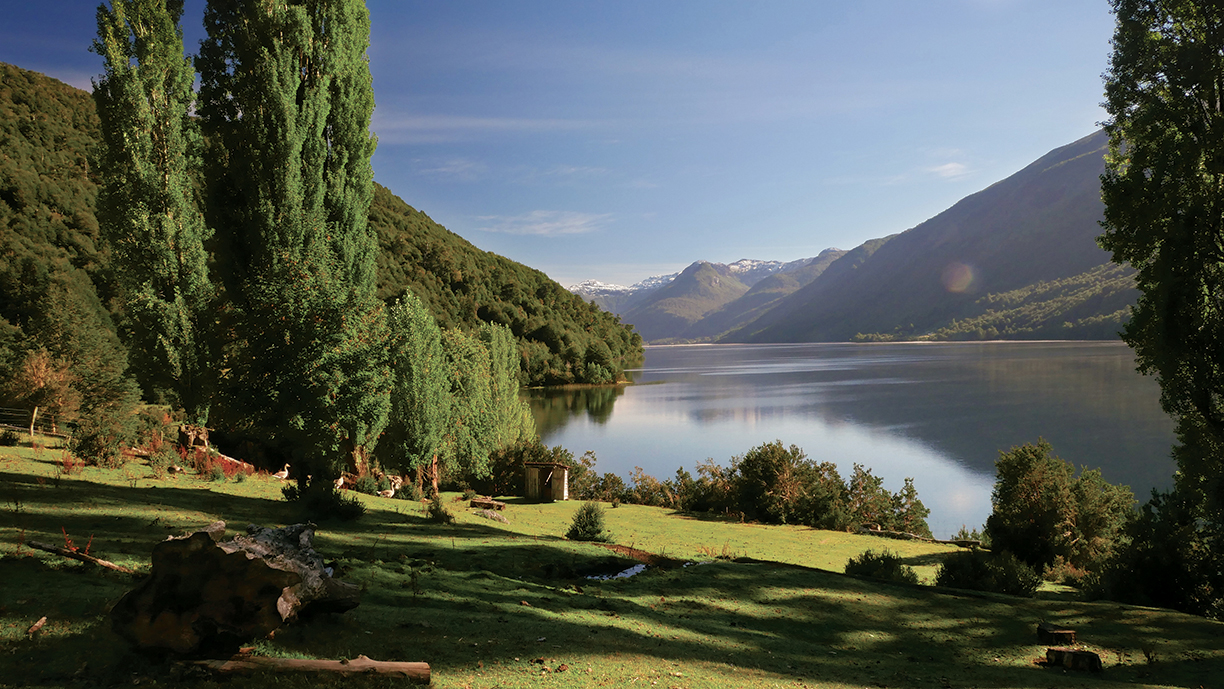
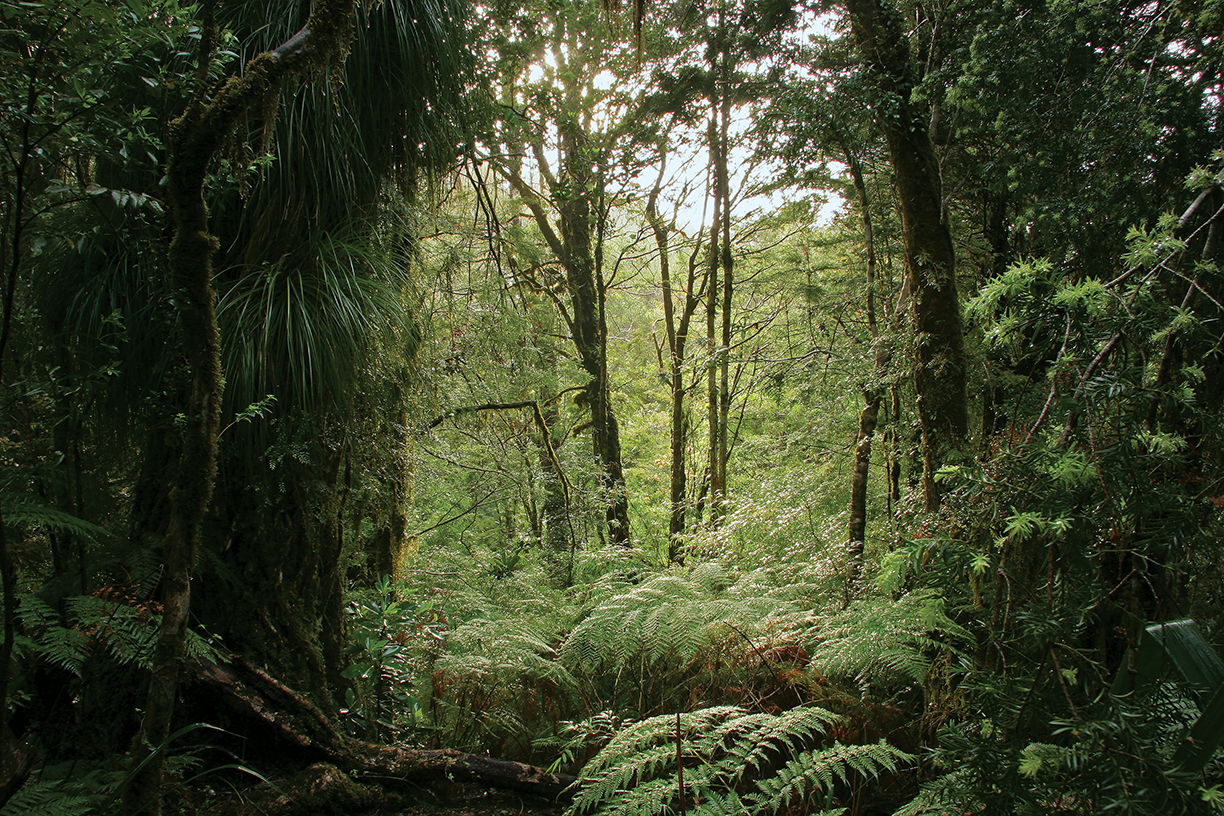

Listed for $150 million by Christie’s International Real Estate with Bórquez & Associates, the one-of-a-kind property — known as Zona de Los Lagos Andinos — boasts unparalleled natural beauty and offers endless possibilities to conserve and develop.
Sited 621 miles south of Santiago and 74 miles from Bariloche, this Chilian paradise has a century-long history, yet it has been left essentially untouched.
“The history of the Hacienda Puchequin is as exciting as its geography,” says María José Bórquez of Bórquez & Asociado.
Spanish soldiers discovered the land in 1558, where they met two indigenous tribes — the Poyas and the Huilliches, who had been living in harmony with the land’s natural habitat for centuries.
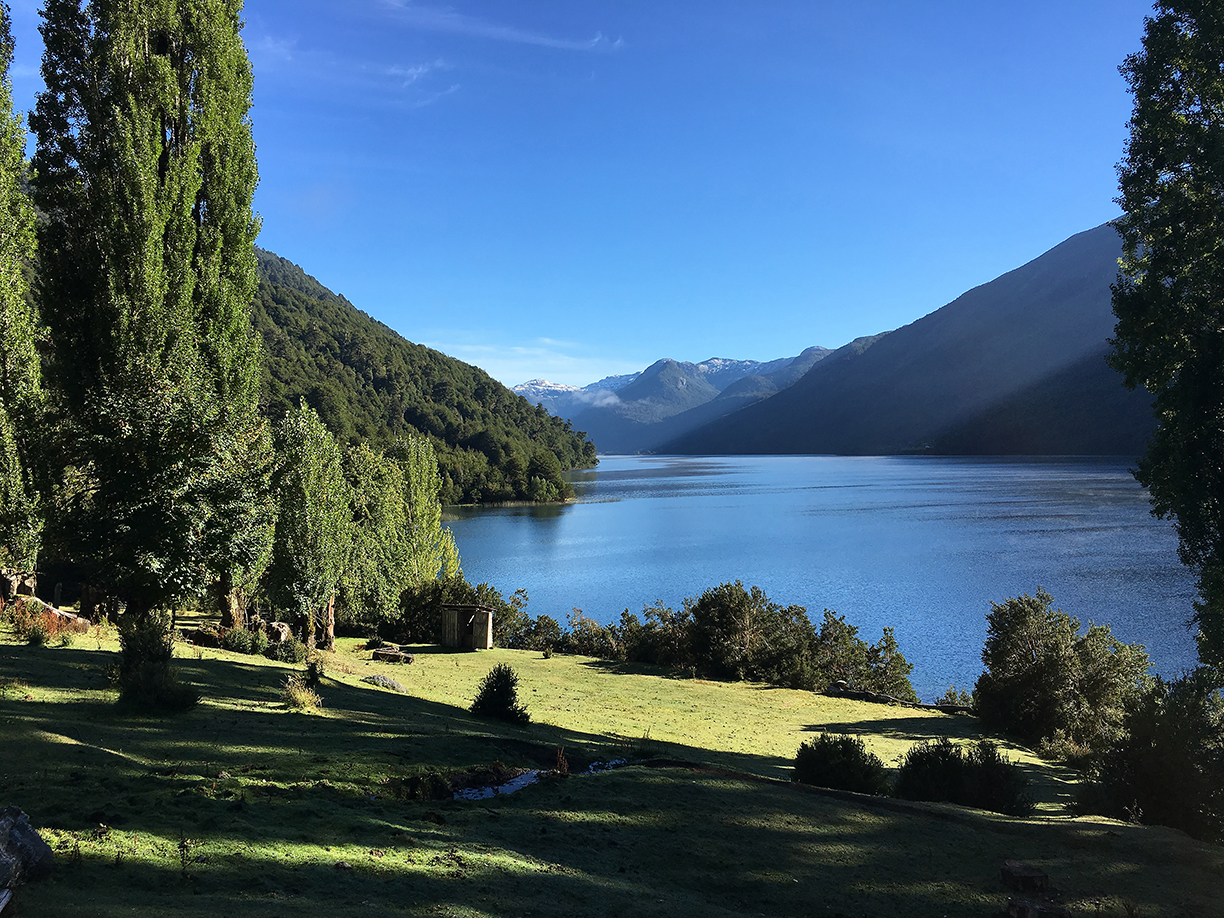
From forests, mountains and granite peaks to lakes, waterfalls and beaches, the land invites a range of activities — including skiing, fishing, rafting, hiking, horseback riding, and rock climbing. “The possibilities are endless for a nature lover, and there are very few other places in the world where one can find this level of natural beauty and diversity of landscapes,” says Bórquez.
Although boundless opportunities await, Bórquez notes that “one of the most interesting features of the land is the rock climbing that can be done in the sector known as La Junta.” With around 50 different routes and walls more than a thousand meters high, the destination challenges climbers from across the globe.
A land of this scope will best serve “a lover of nature with a vision of conservation,” according to Bórquez. “[The buyer] would utilize the land in service of others, enhancing the attractions of this property by creating a tourism development plan, without intervening with the natural ecosystems or native forests,” she adds.
Located near the city of Puerto Montt, Chiloe and Puerto Varas in Chile, and Bariloche in Argentina, Hacienda Pucheguin offers a great location for adventurous tourists.
Photos courtesy Christie’s International Real Estate

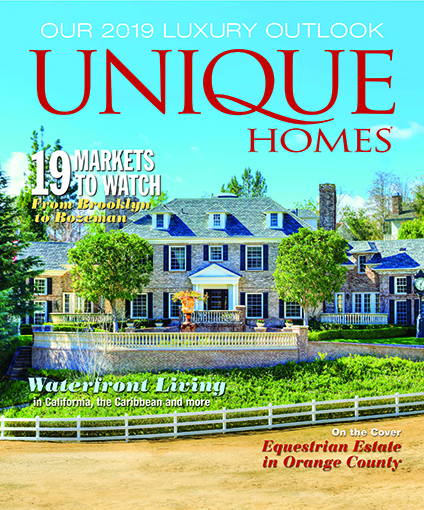
This story was previously featured in the Winter 2019 edition of Unique Homes Magazine.
Improving on excellence is not easy, but Overlook in Camden, Maine (featured on our cover) elevates already significant architecture along with 21 stunning acres perched above a desirable stretch of Maine coastline to an even higher strata.
By Camilla McLaughlin
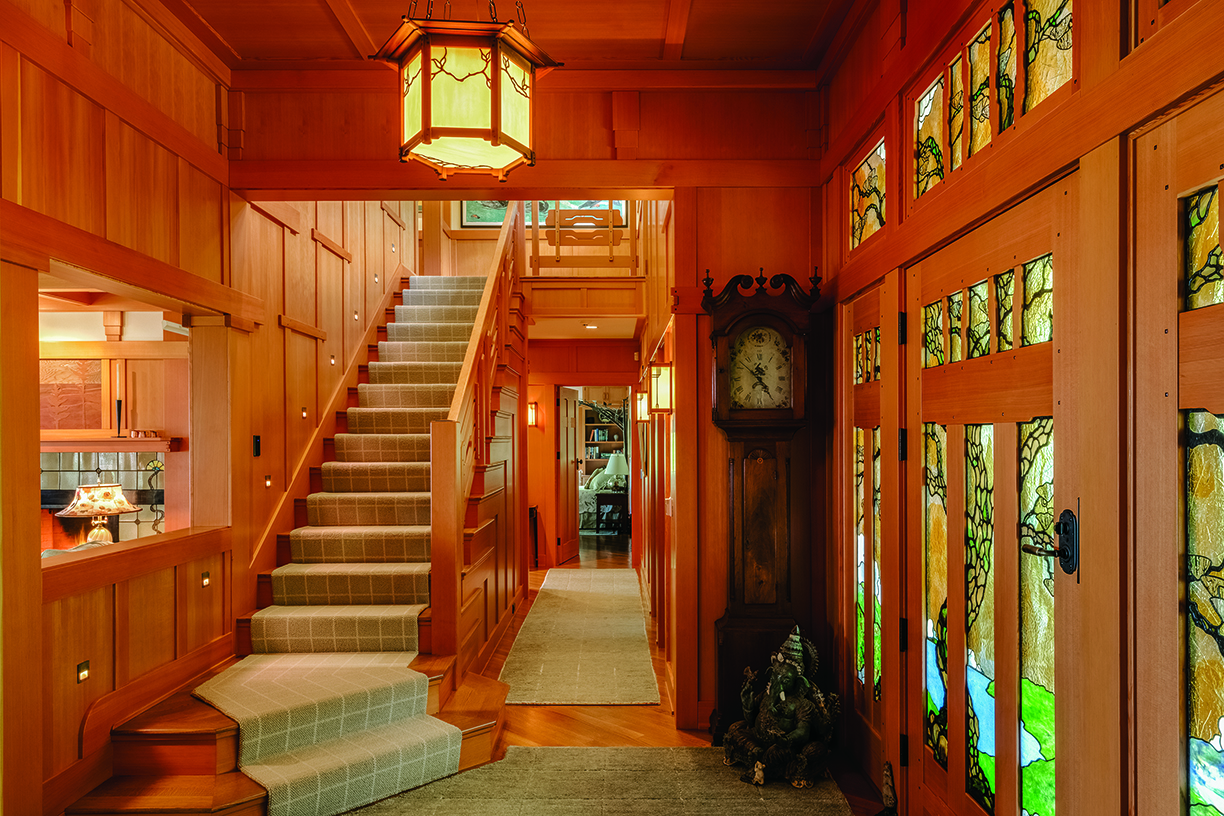
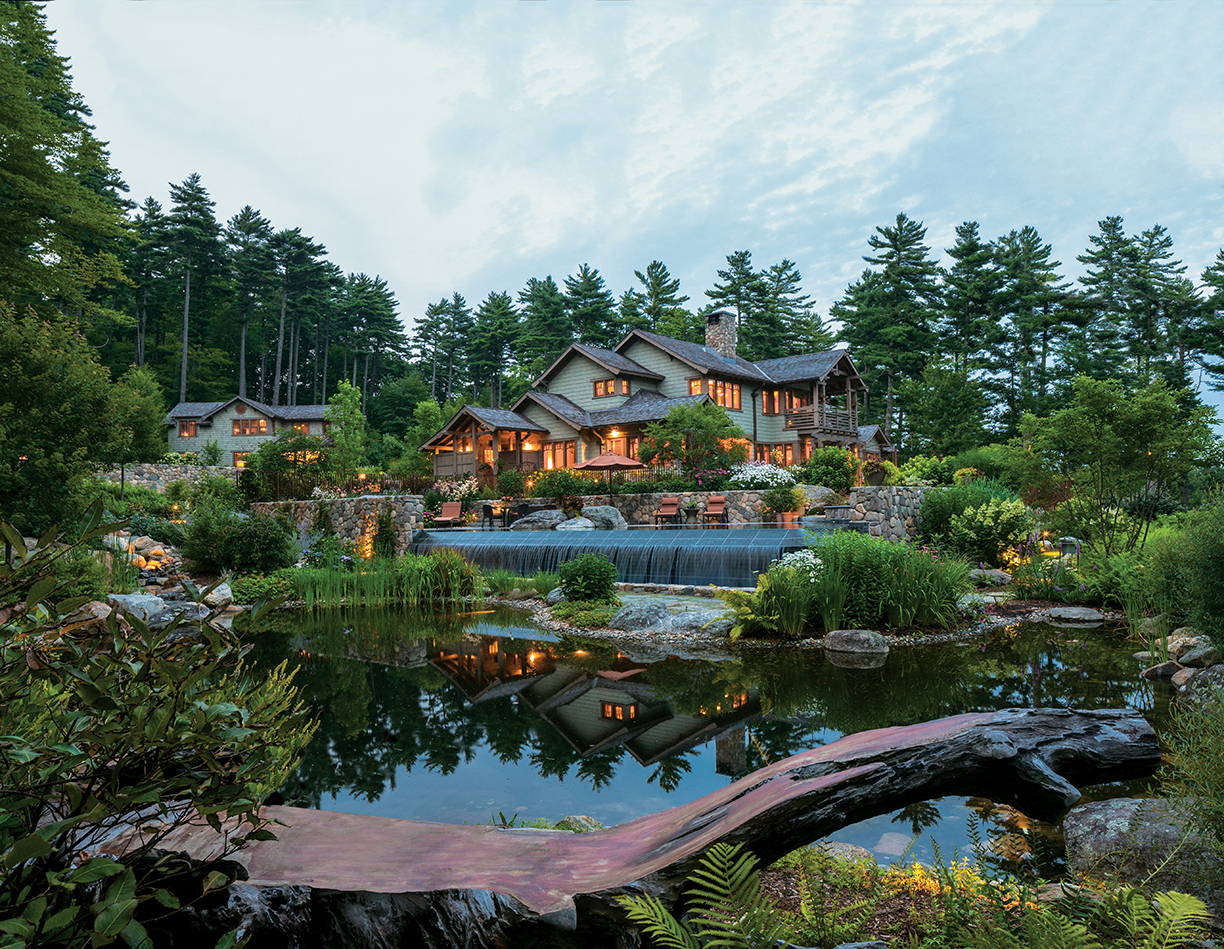
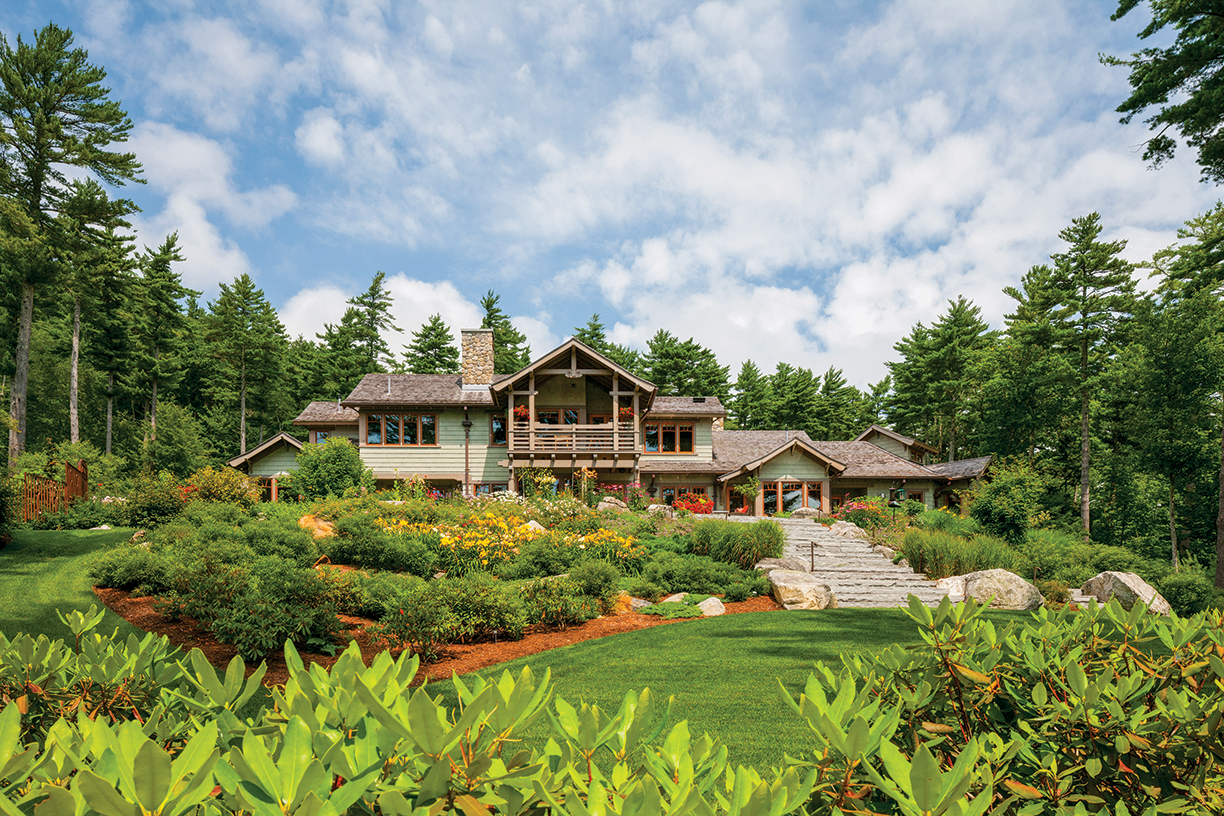
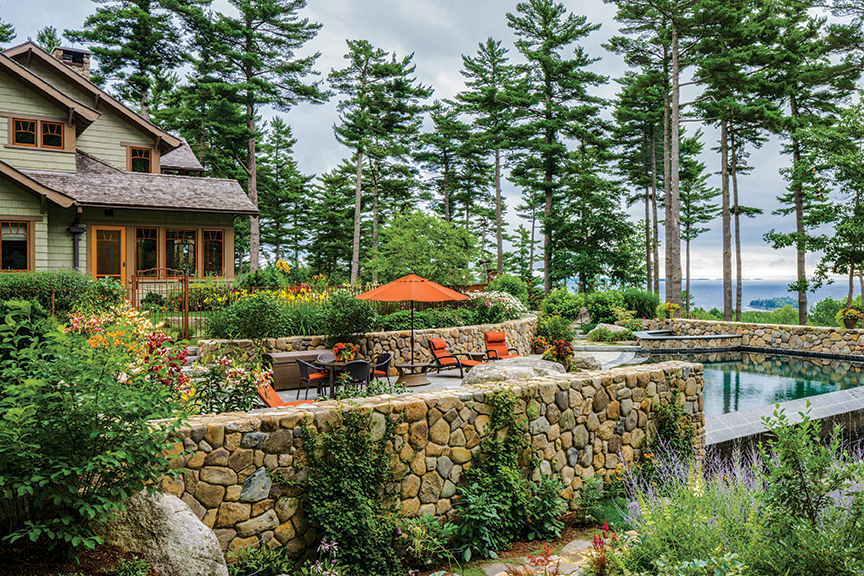
Inspired by the iconic Gamble House in Pasadena, California, this home is a prime example of the Arts & Crafts style but interpreted for the 21st century.
As with many contemporary designs, the open concept entry showcases the views of Penobscot Bay and the islands beyond from the moment you step inside. But then the finely-crafted details in the millwork and joinery, and the world-class stained glass are all reminiscent of the more traditional designs of another era, a hallmark of Arts & Crafts design.
There’s a sense of peace here that exudes from the many ponds and waterfalls, and more than 5,000 specimen trees and plants set against the forest and mountainside. Inside and out, you are surrounded by the colors of nature. “The feeling of the house is one of extreme warmth and comfort. There is a purity of design with great value placed on organic materials and artisan-crafted workmanship that melds beauty with utility. There is a wonderful intimacy in the house and the property. This is a place you never want to leave,” says listing agent Scott Horty, with Camden Real Estate Company.
With a full complement of amenities (a large theater/cinema, a game room, a gym, sauna, and an equally wondrous guesthouse) along with the extensive infrastructure (geothermal heating and cooling, whole house generator and solar array hidden among the trees) you may never have to leave!
Beauty, peace of mind and connection to nature are all priceless. But the price of Overlook is $7.9 million…
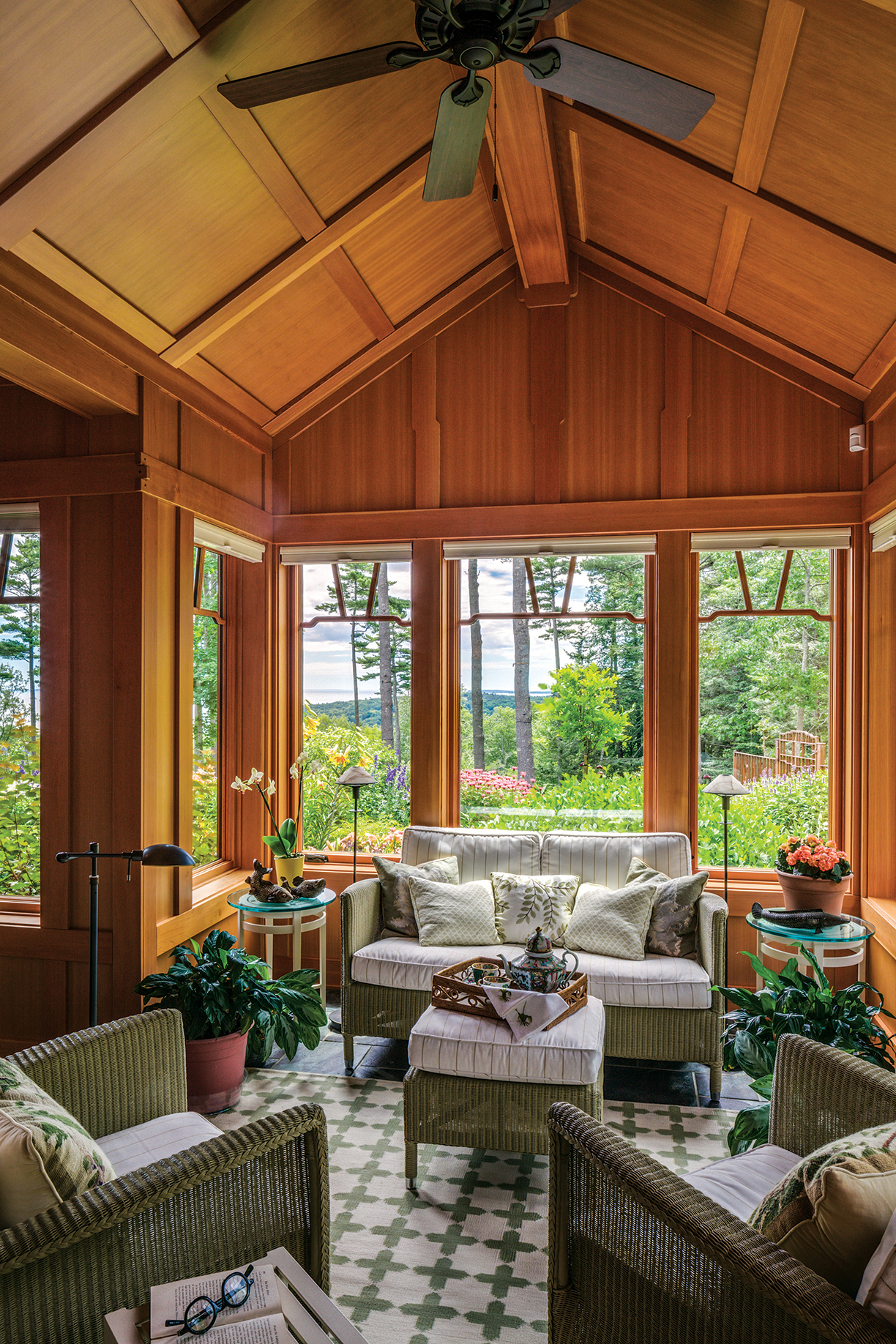
Whether it’s due to the sound of waves crashing on the shore, views of the sun setting on the open water or the scent of the fresh, crisp waterfront air, homes along the water never seem to go out of style. From coast to coast, high-end buyers are in the market for luxury waterfront properties — from teardown properties with coveted views of the California coastline to luxurious estates overlooking Lake Burton.
By Alyssa Gautieri
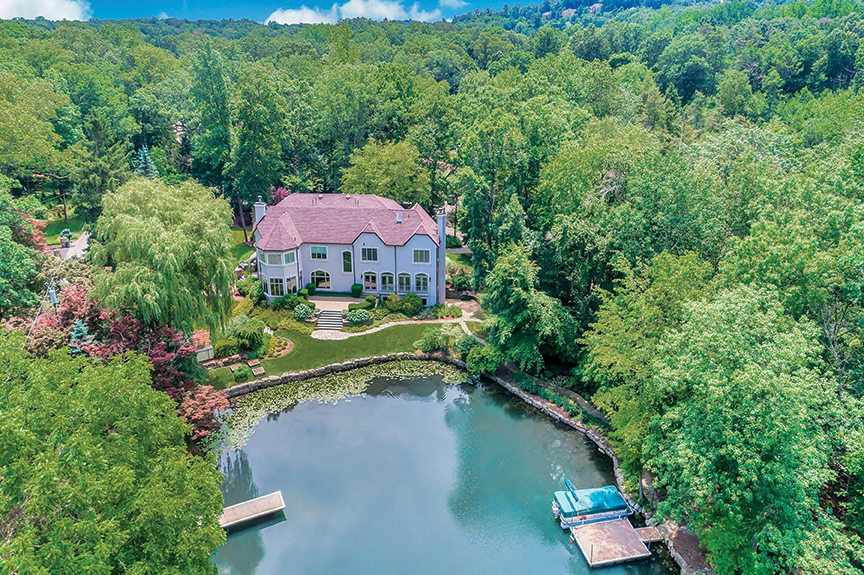
Northern New Jersey
From lakefront to beachfront, New Jersey has a selection of luxury, waterfront properties on the market. Focused on the properties along the northern lakes, Lynn Brescia of Coldwell Banker Residential Brokerage finds that high-end buyers now want more than just great waterfront views and a luxurious standard of living.
Often year-round homeowners, “buyers are looking for areas that allow for outside water activities and local communities that promote social activity,” she says.
764 Pines Lake Drive West
Wayne, New Jersey
Photo courtesy Coldwell Banker Residential Brokerage / NJ
While average prices range between $1 million and $2 million, there are also indulgences such as a $14 million-dollar property in Greenwood Lake, New York. Brescia notes that “homes between $1 million and $1.6 million seem to be in the highest demand.” She adds, “The demographics are often locals between the 40-50 age range with children still at home.”
While northern New Jersey often attracts local buyers, “there are some out-of-state buyers, more from New York City, who are considering a move to a waterfront home,” Brescia notes.
Lake Burton, Georgia
Popular among second-home buyers, Julie Barnett of Harry Norman, REALTORS asserts that the beauty of Lake Burton makes it the perfect destination for a vacation home. “Lake Burton is the prettiest lake in the Southeast and only an hour and half from Atlanta, Greenville and Ashville,” she notes.
Many buyers come from Atlanta, however Barnett has also noticed a trend of young people investing in lakefront property.
While the most expensive waterfront listing in Lake Burton is currently $5.9 million, waterfront homes around $1 million are attracting many potential buyers. Most often a small fishing cabin, teardown properties under $1 million are often purchased due to prime location. For a home priced between $1 million and $2 million, buyers may find a space that needs many upgrades. According to Barnett, a move-in ready home is more likely available in the $3 million-plus price range.
While waterfront inventory has gotten lower in recent years, the new year has brought more activity to the Lake Burton area. Barnett notes, “in the first quarter of 2018, we had three times the number of sales that we had the first quarter of 2017.”
Tampa Bay, Florida
Due to recent growth and the new construction of luxury hotels on Clearwater Beach, high-end buyers are being drawn to the Tampa Bay area, according to Martha Thorn of Coldwell Banker Residential Real Estate.
Both local and out-of-state buyers are in search of new-construction, waterfront properties — particularly focused on homes built above the floodplain. “If we are talking about trends in the luxury market — any property over $1 million, it is very slow unless it is a gulf-front property,” says Thorn, who has noticed waterfront properties selling faster this year.
“There are plenty of luxury homes in our area to sustain the market,” she adds. “As far as up-and-coming areas, anything in South Tampa and near downtown St. Petersburg is selling like hotcakes.”
Recently selling for $7.2 million, a gulf-front home on Redington Beach in Pinellas County is among the highest waterfront sales in the area. Belleair Shore, a beachfront community, is also one of the highest priced areas with prices ranging from $3.5 million to $6.7 million.
943 Bayshore Blvd.
Tampa Bay, FL
Photos by Cary John Photography, Courtesy Martha Thorn
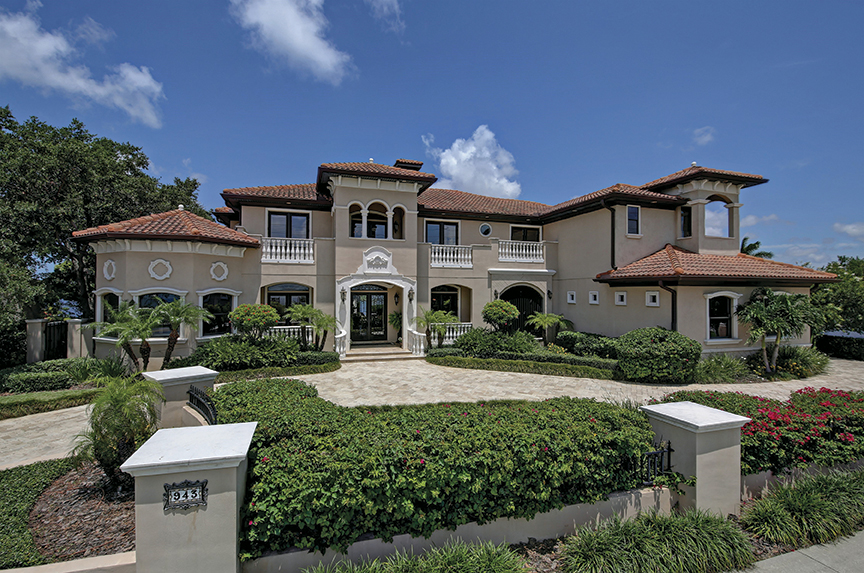
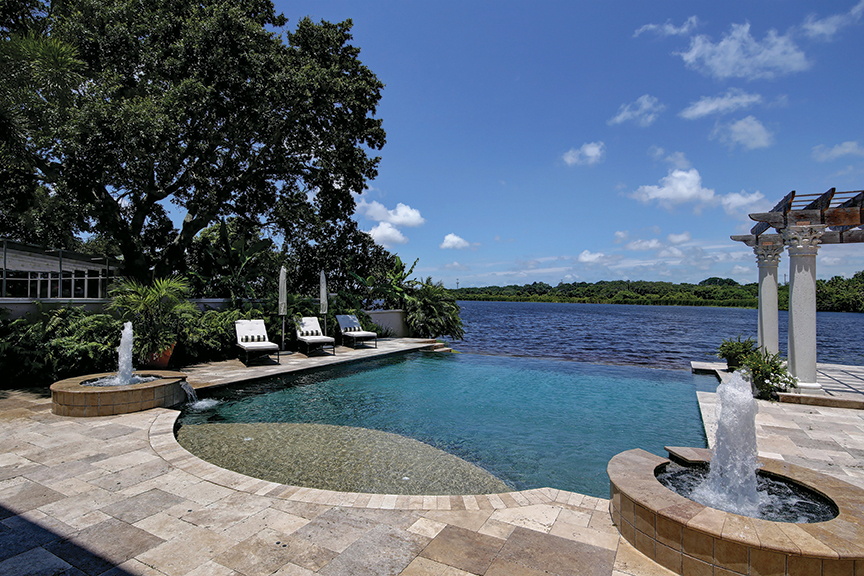
Savannah, Georgia
From homes bordering tidal creeks and deep-water creeks to beachfront homes on the Atlantic Ocean, Savannah embodies a unique waterfront market.
Richard Mopper of Engel & Völkers Savannah notes that “the Savannah market has seen a sharp price correction and values are on an upward swing.” He adds, “waterfront properties, due to scarcity, are rising quicker than the rest of the market,” with waterfront properties ranging anywhere from $800,000 to $14 million in Savannah.
Savannah has a limited number of luxury waterfront homes, which makes it difficult to sustain buyers’ needs. With competition tough in Savannah, the market is making room for new up-and-coming areas. “There are exceptional opportunities for waterfront properties south of Savannah in the quaint areas of Bryan, Liberty and McIntosh Counties — where currently there is an exceptional selection of quality waterfront homes and lots,” Mopper says.
According to Mopper, the buyers include locals in an upward spiral as well as people from all over the globe. “The mystique of Savannah has made the community internationally known with people interested in second and third homes,” he says.
Palos Verdes, California
We have a saying in California, ‘you’re either waterfront or you’re not,” says Megan M. Neel of RE/MAX Estate Properties, who mentions that desirability for waterfront properties is growing in California and hence, so are the prices.
Located in Palos Verdes Estates, Neel has a waterfront property currently listed at $23.888 million — a price that is significantly above other waterfront properties in the area, with the most recent highest-priced waterfront property selling for $16 million.
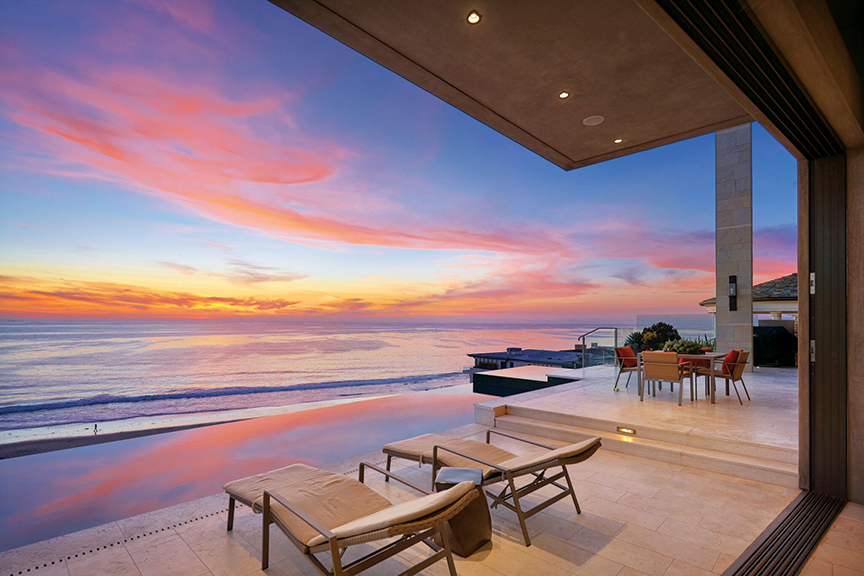
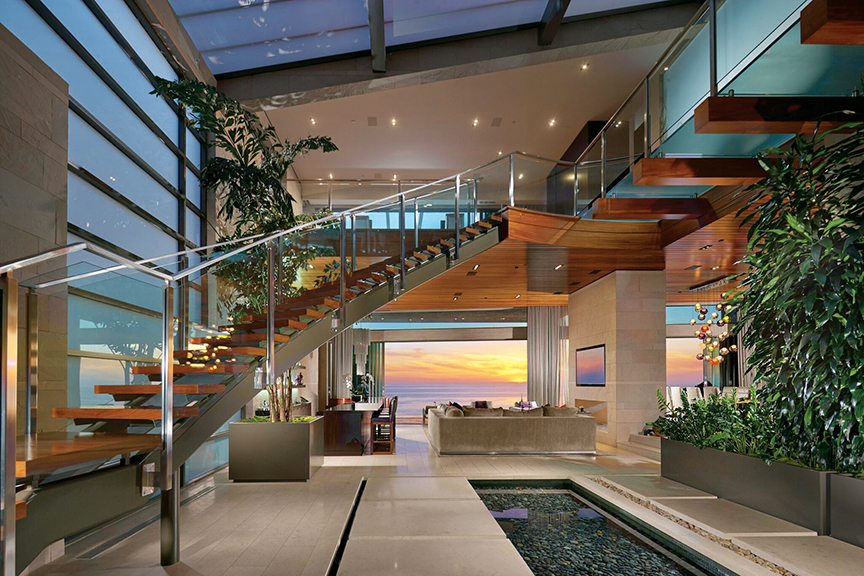
“This property is on the higher end of the spectrum,” notes Neel, who finds that most waterfront homes are teardown properties starting in the $6 million to $7 million range. “There are so many people that would love to live on the ocean, but affordability is often a factor,” she adds.
With many properties being purchased for the land and location, water views become an important factor for buyers. “In this area, the most coveted views are ones that include the coastline not just the horizon,” Neel says.
5 White Water Lane
Dana Point, California
Photos courtesy Tim Smith, Coldwell Banker Residential Brokerage
King County and the Greater Puget Sound, Washington
Attracting a diverse audience — with about 50 percent being locals and 50 percent coming from out of state and other countries — the waterfront market is booming in Washington. According to Kelli Langford of Keller Williams Realty, “prime waterfront properties with acreage and views are going quick. They are not sitting on the market long.”
With King County’s Lake Samamish, and Pierce County’s Lake Tapps on the map as up-and-coming areas, Langford believes there are enough luxury, waterfront homes on the market to sustain buyers’ needs. “Washington offers many wonderful lake and waterfront homes in King County and the Puget Sound,” she says. “With patience, perseverance and the right Realtor, buyers should be able to find the waterfront home of their dreams.”
Currently, the most expensive waterfront property is located in Bellevue with a listing price of $45 million. Another prominent listing is in Lake Tapps, which is priced at $4.3 million.
1000M, the 74-story, super-luxury high-rise, designed by Helmut Jahn with interiors by Kara Mann, has been the best-selling condominium development in downtown Chicago since launching sales last October.
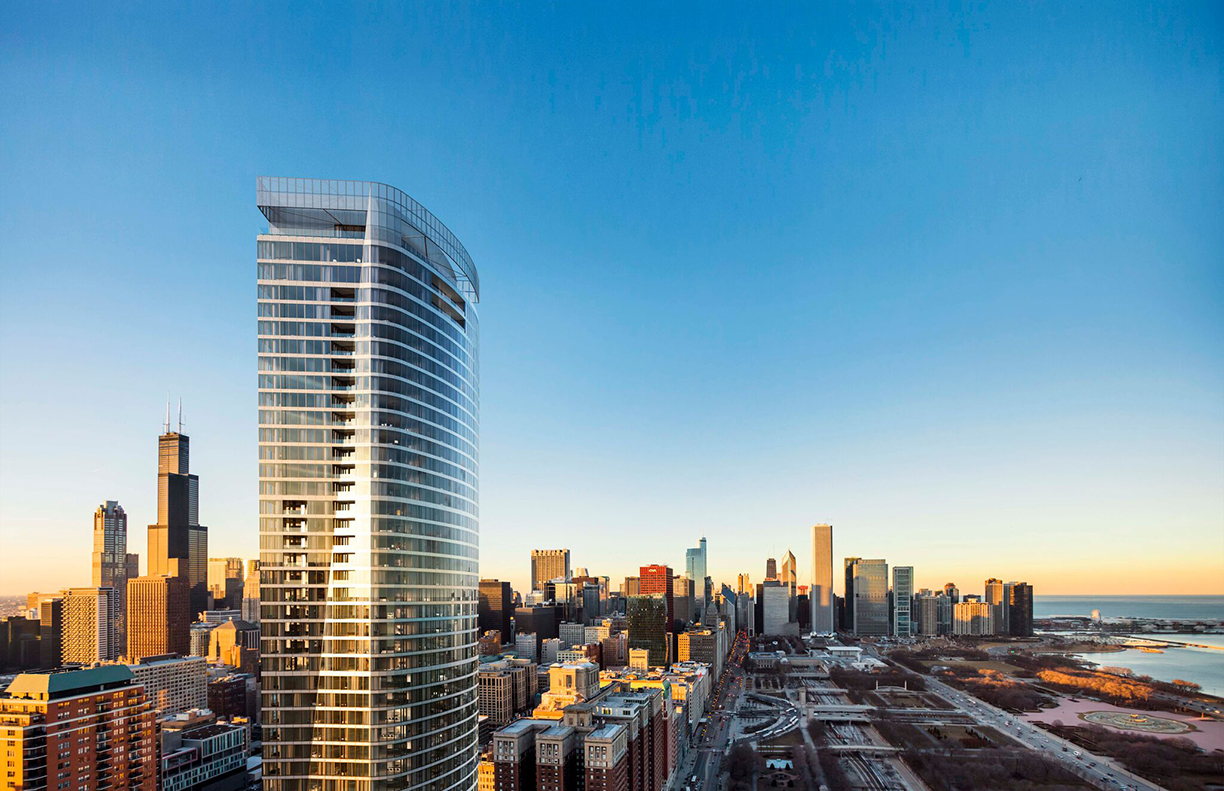
The 323-unit building, located at 1000 S. Michigan Avenue, across from Grant Park, has paced the new-construction condo market throughout the fourth quarter of 2017 and first quarter of 2018, logging 38 contracts, or roughly a third of all new development sales downtown, noted @properties, the exclusive sales firm for the building.
1000M’s sales are more than double the next fastest-selling development, the 94-story Vista Tower, and represent approximately 34 percent of all development sales downtown. The figures are based on data from two sources: Midwest Real Estate Data, LLC, which operates the Chicagoland Multiple Listing Service, and the 4Q17 Downtown Chicago Condo Report compiled by Intregra Realty Resources.
New-construction inventory remains at historically low levels, while demand for luxury condominiums downtown has surged. Year to date, sales at the upper end of the market have significantly outperformed 2017, both in terms of the number of units sold and the price of those units. A number of recent sales have occurred between $1,300 and $1,400 per square foot, and the sale of the penthouse at 9 West Walton late last year topped $2,000 per square foot for raw space.
At 1000M, condominiums under contract range in price from approximately $600 per square foot to more than $1,000 per square foot, @properties noted.
“Virtually every contract we take at 1000M sets a record over what has previously sold south of Millennium Park. Certainly, at the high end of what we’ve sold, we are shattering pricing records for the area,” said John Goldsworthy of @properties, director of sales for 1000M.
“It shows that the market sees exceptional value in 1000M’s architecture, interiors and amenities, our unobstructed views, and our location on Michigan Avenue. We continue to work through a robust list of interested buyers, and we look forward to a strong spring and summer,” Goldsworthy added.
In addition to its fast start, 1000M has also won several awards, including Modern Luxury Interiors’ Best New Development of 2018 and the 2018 Gold Award for Best Presentation Center from the National Association of Home Builders.
1000M is anticipated to break ground in 2019 and be completed by 2022.
Photos courtesy of Millerhare
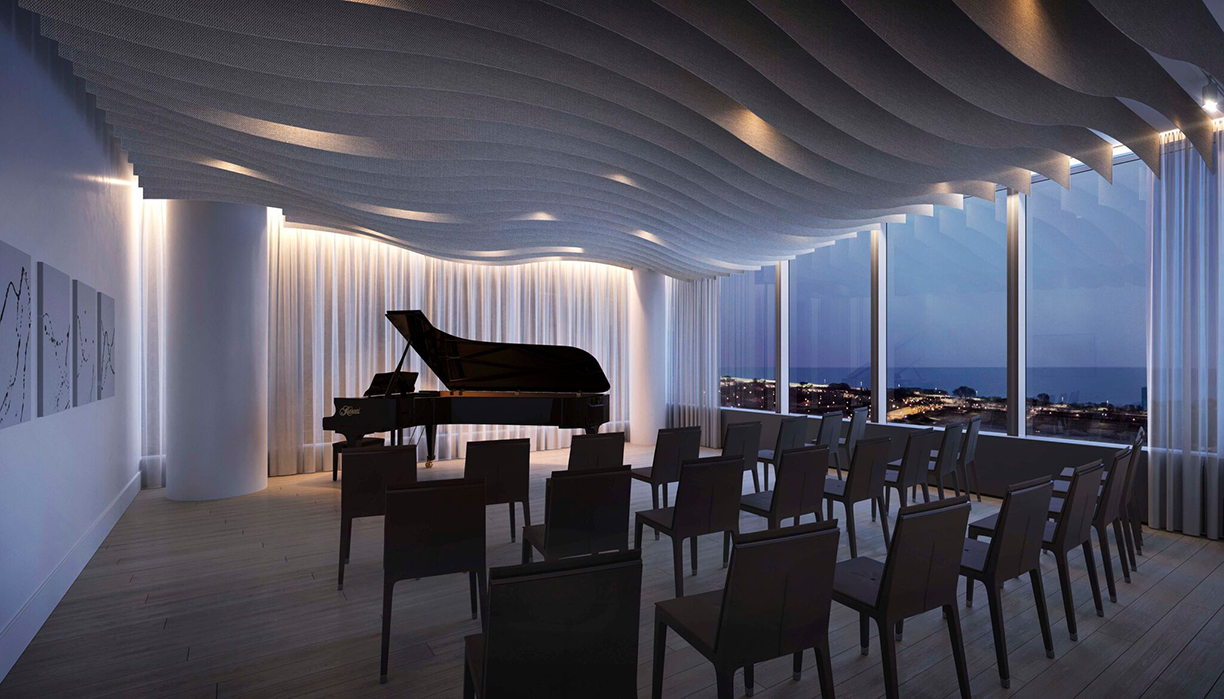
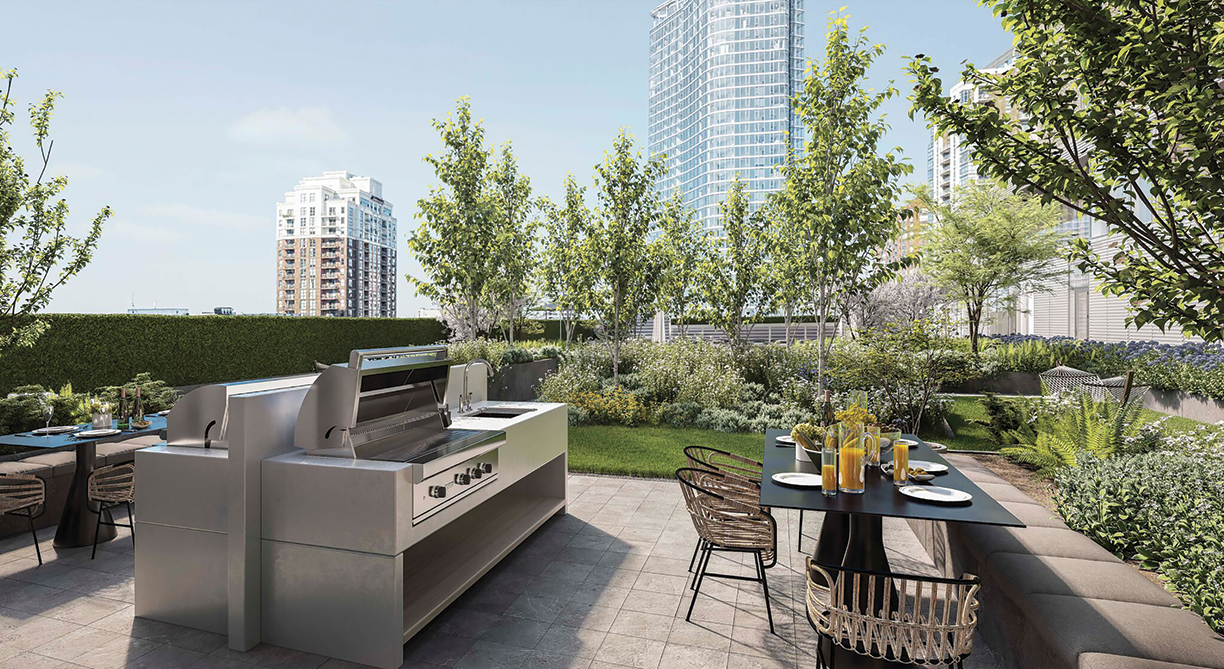
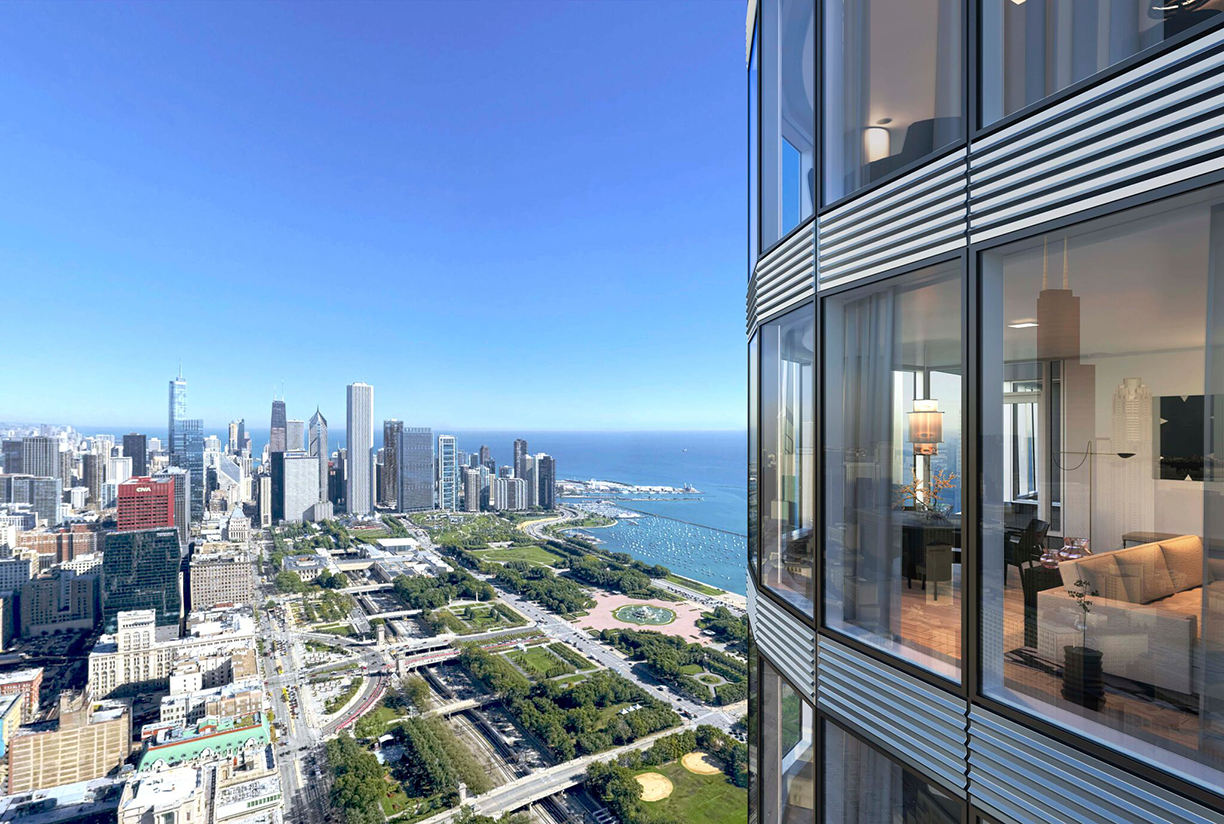
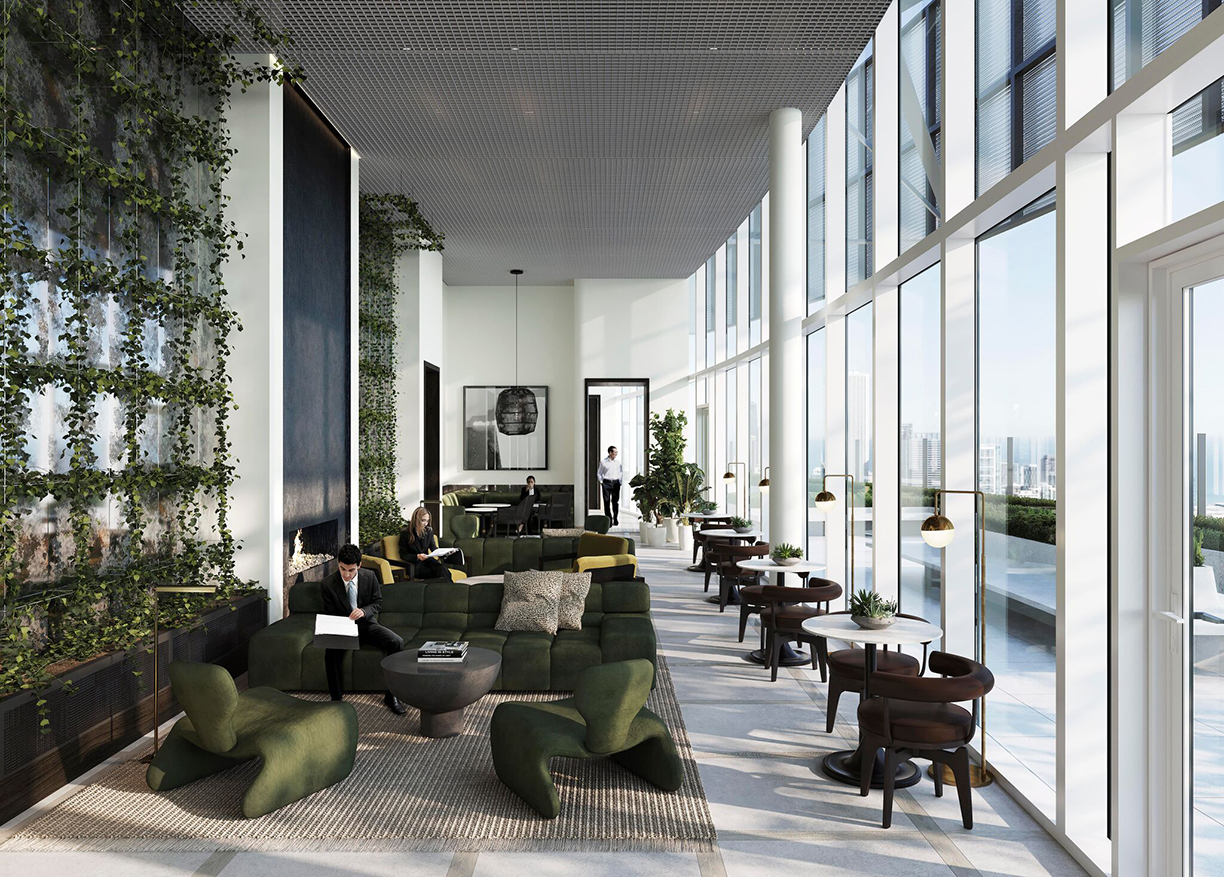
Showcasing fantastic views and deed access to private Grape Bay Beach, Ardsheal Cottage is nestled in a quiet garden setting in Paget, Bermuda.
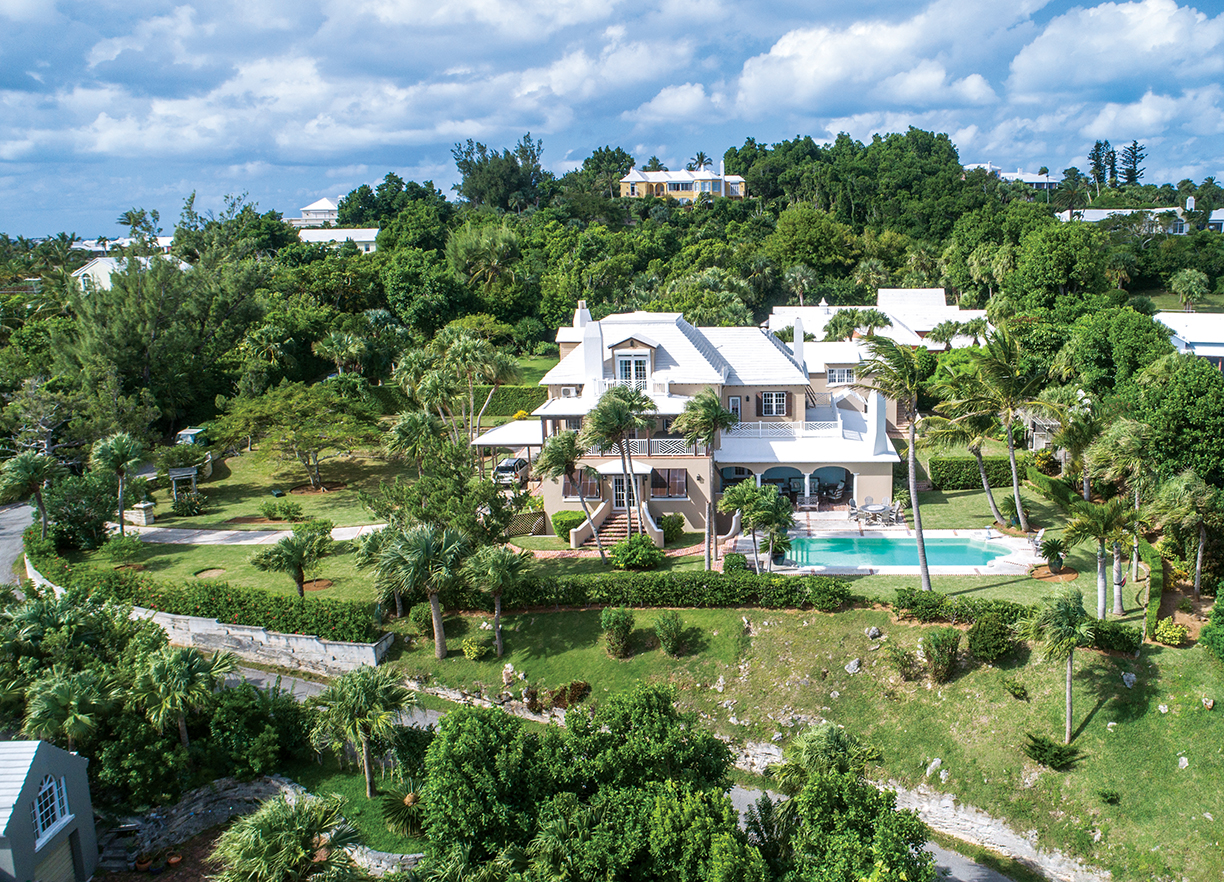
Only minutes from Hamilton, the immaculate executive home was originally constructed in 1906 and completely renovated in 2013.
“Numerous artisans were engaged during the refurbishment of the home — from the millwork, cabinetry, floor finishes and window treatments, all of which lend to an incredible first impression,” says listing agent Brian Madeiros of Coldwell Banker Bermuda Realty.
Upon entering the home, one is greeted by beautiful woodwork, Thibault wallpaper and a custom-designed triple mast schooner crystal chandelier. It also features 6,000 square feet of living space, four bedrooms, four and a half baths and an open-beam covered terrace that transitions from the kitchen to the pool deck with copious seating and a working fireplace.
“This bespoke sophisticated kitchen is perfectly designed for active families,” says Madeiros. “One could comfortably spend hours in this area of the home whilst losing all sense of time.”
Listed for $7.5 million, the home also includes a guest cottage with a full bath and kitchenette above the garage. “Ardsheal Cottage is perfectly suited for an executive and their family,” says Madeiros. “The commute from ones busy city office to the private shared beach to meet your family for an evening picnic is approximately five minutes — Ardsheal Cottage absolutely complements the lifestyle of a busy but adventurous family.”
From the Upper Peninsula’s Marquette on Lake Superior, to the Lower Peninsula’s Harbor Springs on Lake Michigan, it’s no surprise that much of the Great Lakes State’s luxury real estate features waterfront or water-view properties. Michigan is bordered by four of the five Great Lakes, offering a freshwater coastline longer than any political subdivision in the world. Boating and outdoor recreational opportunities abound here.
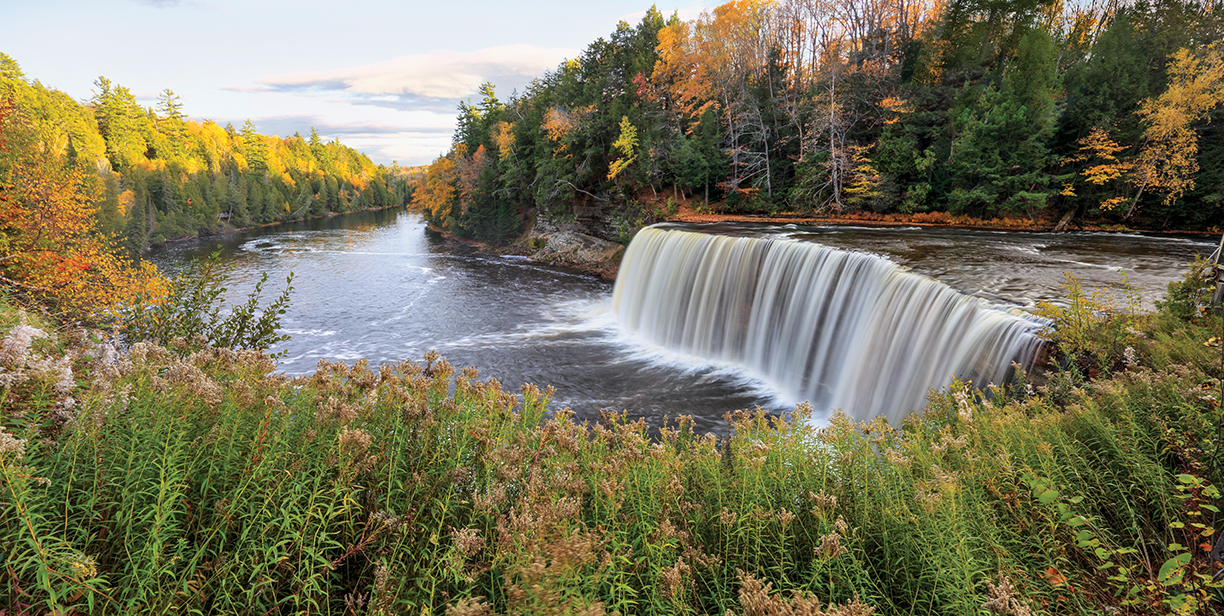
$20,000,000
Granot Loma, 1000 Co Road Ke, Marquette
Granot Loma, a world-class estate located on the shores of Lake Superior, is possibly the largest handcrafted log cabin in the nation. Consisting of 26,000 square feet, the 23-bedroom property was handcrafted by over 400 craftsmen in the 1920s.
• Wild Rivers Realty & Associates, Inc.
$14,950,000
2625 W. Top O The Lake Road, Gulliver
With 300 acres of waterfront property and almost 2 miles of shoreline in Michigan’s Upper Peninsula, this property borders over 2,400 acres of state forest, offering abundant privacy.
• Harbor Sotheby’s International Realty
$12,900,000
6028 Trillium Trail, Harbor Springs
Visible only from the lake, this exclusive retreat is expertly constructed with refined details and boasts expansive views of the coastline. Details include 300-year-old chestnut floors, a 13th-century French fireplace and 300-year-old Jerusalem stone flooring.
• Graham Real Estate
$11,900,000
590 Dubuar Street, Northville
Castello Montebello, a palatial estate, sits on 3 pristine acres near the historic district of Northville, the most unique property in Southeast Michigan. With over 17,000 square feet of sheer elegance, this home was once the consulate of the Czech
Republic.
• Max Broock Realtors
$10,550,000
2756 Turtle Bluff Drive, Bloomfield Hills
Exquisitely detailed architectural masterpiece with the charm of an Italian villa located in the gated Turtle Lake community. Over 14,500 square feet of living space nestled on almost 2 acres, featuring a 2-story executive library and stunning dining room.
• Signature Sotheby’s International Realty
$10,250,000
2670 Turtle Lake Drive, Bloomfield Hills
The most prestigious trophy property in Oakland County is privately set behind the gates of Turtle Lake. The 12.11-acre parcel served as a working farm in the late 1800s and offers original 1920s buildings such as a dairy barn, silo and horse stable.
• Harbor Sotheby’s International Realty
$9,995,000
Pine Hollow, 10400 S. Bayshore Drive, Elk Rapids
Pine Hollow, a Northern Michigan waterfront estate located on the shores of East Grand Traverse Bay, is a unique contemporary lakeshore masterpiece with natural pathways, an orchard garden, tennis court and a separate meeting barn.
• Harbor Sotheby’s International Realty
$9,900,000
51571 8 Mile Road, Northville
On a 4.55-acre lot with a private driveway and finished walkout basement, this Vistal Homes-built home is where elegance is perfected. Find unmatched quality, supervision and attention to detail.
• Brandt Real Estate
$9,900,000
2600 Turtle Lake Drive, Bloomfield Hills
Nestled within a gated community, this 15,000-plus-square-foot estate home is situated on 7-plus acres. The classic waterfront home was redesigned for grand entertaining with a seamlessly blended floor plan.
• Max Broock Realtors
$9,900,000
Lockwood Lake Ranch, Atlanta
Lockwood Lake Ranch is a one-of-a-kind dream home. The approximately 2,000 acres and the 118-acre lake gives hunting camp a whole new meaning. The main house is nestled on the lake and amongst mature trees and there are numerous historic buildings.
• Kidd & Leavy Real Estate LLC
$8,900,000
186 S. Division Ave, Holland
This prestigious and exclusive waterfront legacy sits on the banks of Lake Macatawa, stretching over 38 acres of waterfront property. The estate combines luxury with comfortability, spanning from the stabled barn, pastures, and riding trails to the outdoor pool and patio.
• Beacon Sotheby’s International Realty
$8,195,000
984 Lake Shore Road, Grosse Pointe Shores
One of the finest builds in Grosse Pointe Shores, complete with more than 13,000 square feet, 4 bedrooms, 5 baths, 3 powder rooms, a theater, gym, spa, slate roof, elevator, and other luxurious features. The home is being sold fully furnished.
• Capital Real Estate Group, LLC
$8,100,000
31500 Bingham Road, Bingham Farms
This 1939 grand estate makes contemporary living and entertaining a dream. The 17,500-square-foot residence is sited on 15.5 park-like acres and features an incredible indoor pool, spa and fitness complex.
• Hall & Hunter-Birmingham
$7,900,000
15640 Lakeshore Road, Union Pier
Spectacular beachfront destination set amidst lush landscaping with complete privacy and 100 feet of Littoral Right Lake Michigan Frontage. Features include a custom infinity pool with a cascading waterfall, hot tub, well-appointed outdoor kitchen and lakeside screen pavilion.
• Paradise Properties Harbor Country
$7,800,000
297 County Road KB, Marquette
This private property features a restored historic lodge, cedar home that together can sleep 12, a mile of Lake Superior frontage with a fine-sand beach, and a dramatic rock bay with small granite islands reminiscent of California’s Big Sur.
• Huey Real Estate
$7,500,000
20-A Peppers Trail, Montague
A modern 8,000-square-foot masterpiece with 360-degree views, this West Michigan home is an architectural masterpiece of stone, wood, copper and glass, crafted in perfect harmony with its environment atop a dune overlooking Lake Michigan.
• Andrea Crossman Coldwell Banker Woodland-Schmidt
$7,200,000
15860 Lakeshore Road, Union Pier
For more than 50 years, this historic property has been home to the family-operated “Gintaras Resort” and includes 14 vintage, fully equipped rentable units plus a tennis court and game building.
• Cressy & Everett Real Estate
$6,995,000
313 and 315 Belvedere Ave, Charlevoix
A boater’s dream waterfront estate for the discerning collector and boating enthusiast on 1.19 acres of land with 158 feet of waterfront. Located on Round Lake in Charlevoix, this unique and rare opportunity allows for world-class boating, yachting and sailing on inland Lake Charlevoix.
• Harbor Sotheby’s International Realty
$6,990,000
02503 Mountain Road, East Jordan
Located on the shore of Lake Charlevoix is “Point of View,” a magnificent estate nestled on over 3,000 feet of sandy lake frontage and 60 acres of mature maples, aspens, and pines. The log home, guest home and stables are all tastefully appointed and completed to the highest standards available.
• Kidd & Leavy Real Estate LLC
$6,975,000
3950 Franklin Road, Bloomfield Hills
This magnificent stone French manor sits beautifully on 2.5 acres with immaculate gardens and grounds and spectacular views of Lower Long Lake. Designed by celebrated architect Wallace Frost, the exquisite craftsmanship and intricate details can be seen throughout.
• Hall & Hunter Realtors
$6,850,000
16096 Lake Ave, Union Pier
Coastal luxury is redefined in this 11,000-square-foot, 8-bedroom, 6.5-bath lakefront home on 1-plus acres with 100 feet of littoral beach rights in Union Pier. From the nature-
inspired color palette to the rich textures and finishes of the furnishings and fixtures, every detail pays homage to the lake, sand and sky.
• Coldwell Banker Residential Brokerage
$6,800,000
2673 Whitmarsh Road, Vanderbilt
This 1,680-acre piece of paradise, with 3 miles of private Sturgeon River and 2 miles of Moss Back Creek offers 6 homes for a total of 16 bedrooms and 14 full baths. Amenities include a full-size swimming pool and tennis courts.
• Berkshire Hathaway HomeServices Michigan Real Estate
$6,800,000
5995 Tamarack Lane, Petoskey
Truly a one-of-a-kind home! Enjoy 1,000 feet of waterfront with panoramic views from every room in the house. The house features 4 bedrooms, 3 full baths, 3,500 square feet, 3 boathouses, extensive docking, a custom kitchen, and an amazing sun porch.
• Kidd & Leavy Real Estate LLC
$6,600,000
29 N. Manitou Trail, Lake Leelanau
This Leelanau County coastal property on Good Harbor Bay is large, with about 16 acres and 706 feet of Lake Michigan frontage. This is prime Leelanau Peninsula lakefront living, with privacy and convenience, as well as resort buildings, some dating to the 1920s.
• Huey Real Estate
$6,399,000
721 And 723 Dellwood, Harbor Springs
Gorgeous 2-lot Lake Michigan retreat designed to last a lifetime by Marshall Watson Interiors. This exceptional 6,000-square-foot residence is situated strategically on 2 lots and was totally remodeled, with a new kitchen installed, in 2015.
• Harbor Sotheby’s International Realty
photo ©istockphoto.com / DougLemke


